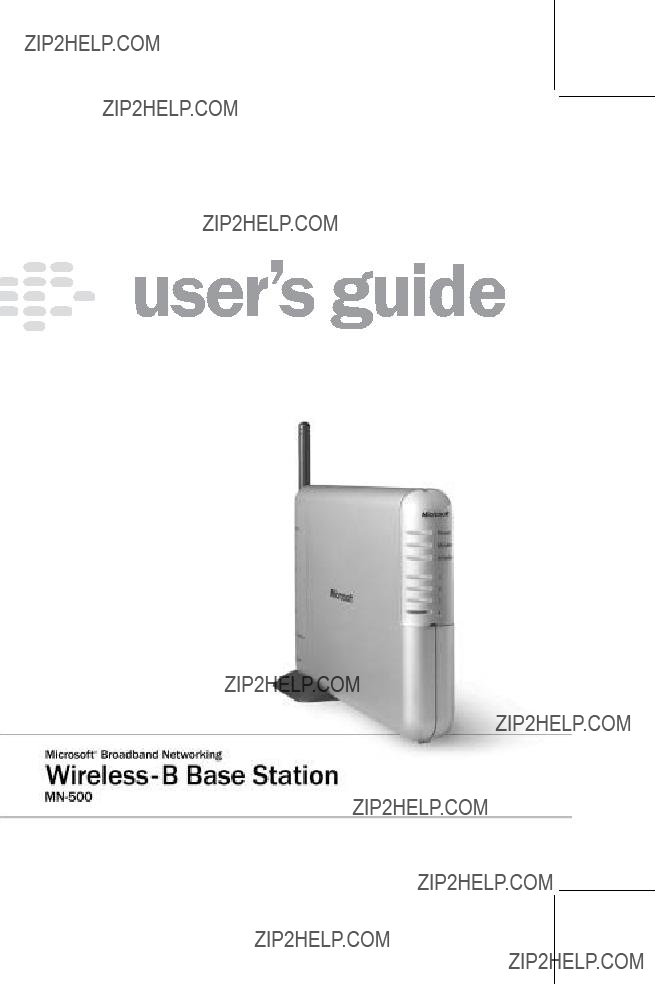
m

m

Important
Do not plug a phone jack
Important
Ne branchez pas une ligne t??l??phonique dans aucuns des port de r??seau (RJ45).
Caution
For use with UL Listed, CSA and GS approved personal computers.
Base Station: Only use AC Adapter provided with the unit, Model Number
Not intended for use in machinery, medical or industrial applications.
Do not use onboard an aircraft or in hazardous locations such as a gas station or other explosive environment.
For indoor use only.
Do not touch or
Device should be located at least 20 cm (8 inches) away from any human body in order to meet FCC exposure limits.
Avertissement
N???utilisez qu???avec des composantes homologu??es UL, CSA ou TUV.
N???utilisez qu???avec le bloc d???alimentation fourni avec cet appareil No de mod??le
Ne pas utiliser ce dispositif dans une application industrielle ou m??dicale.
Ne pas utiliser dans un avion ou en pr??sence de vapeur explosive
N???utiliser qu????? l???int??rieur.
Ne touchez pas ?? l???antenne lorsque l???appareil est en fonction
Ce dispositif doit ??tre ?? plus de 20 cm (8 pouces) de toute personne sinon l???utilisateur devrait limiter le temps d???exposition..
Information in this document, including URL and other Internet Web site references, is subject to change without notice. Unless otherwise noted, the example companies, organizations, products, domain names,
Microsoft may have patents, patent applications, trademarks, copyrights, or other intellectual property rights covering subject matter in this document. Except as expressly provided in any written license agreement from Microsoft, the furnishing of this document does not give you any license to these patents, trademarks, copyrights, or other intellectual property.
?? 2003 Microsoft Corporation. All rights reserved.
Microsoft and Windows are registered trademarks of Microsoft Corporation in the United States and/or other countries.
UPnP is a trademark of UPnP Implementers Corp.
The names of actual companies and products mentioned herein may be the trademarks of their respective owners.

0703 Part No.

ii Microsoft Broadband Networking Wireless Base Station User???s Guide

Contents iii



 introduction
introduction
Welcome to
Thank you for purchasing the Microsoft?? Broadband Networking Wireless Base Station. This chapter describes your wireless base station and explains wireless (radio) and wired (Ethernet) connections.
With your new wireless network, you can share an Internet connection, files, and printers. Besides adding computers to the network, you can add a variety of devices, provided each device has an available Ethernet port or a wireless adapter (that is compatible with 802.11b
For example, you can connect a game console (such as a Microsoft Xbox?? video game system), a Pocket PC, a home security or automation device, a digital audio controller, or even some newer televisions to your network.
About Your Wireless Base Station
The wireless base station comes with other components to help you set up and connect your wireless network. The box contents are shown in the following illustration.
The Microsoft Wireless Base Station is a multifunctional device:
OIt enables you to share your broadband Internet connection with all the computers on the network.
OIt helps provide a layer of security between your network and the Internet.
OIt enables wireless connectivity for computers within its range.
OIt helps provide security for your wireless transmissions.
Most people enable all of this functionality, as described in Chapter 2.

UPnP Standards and Your Wireless Base Station
The Microsoft Wireless Base Station adheres to the UPnP??? standards that are defined by the Universal Plug and Play Forum. UPnP standards allow devices on the network to communicate their capabilities to the base station by using a common vocabulary. This makes setting up your wireless base station easier. UPnP standards also allow you to use many programs (like instant messaging programs and multiplayer games) on your network without having to go through a complicated configuration process.
Base Station Ports, Status Lights, and the Reset Button
The following illustrations show the locations of the ports, status lights, and Reset button on the base station.
Reset button
Ethernet ports
To Modem port
Power port
On the back of the base station, you will find a Power port, a To Modem port, four numbered Ethernet ports, and a Reset button.
2Microsoft Broadband Networking Wireless Base Station User???s Guide

Antenna
Power, Modem, and
Wireless lights
Ethernet port lights, which correspond to the Ethernet ports on the back of the base station
Optional
stand
The front of the base station has seven status lights. The following table describes the behavior of each light.
Chapter 1: Introduction 3

Using the Base Station Stand
You can position the base station horizontally or vertically. To position it vertically, use the detachable stand that is included in the box.
To attach the stand
1.Insert the two rectangular hooks on the stand into the two rectangular openings on the bottom of the base station.
2. Slide the stand toward the center of the base station.
To detach the stand
O Slide the stand away from the center of the base station.
Resetting the Base Station
You can reset the base station to correct connectivity problems. Simply unplug the base station power cord and then plug it back in again. The Power light will turn orange and then turn green when the reset is complete.
Restoring Factory Default Settings
You can restore the factory default settings to the base station if, for example, you forget your base station password. Restoring the base station erases all your current base station settings and returns the password to the default, admin. After you restore your base station, you will need to reconfigure the base station settings. You can do this by running the Setup Wizard and clicking Set Up a Product.
4Microsoft Broadband Networking Wireless Base Station User???s Guide

To restore the base station to factory default settings
1.Use a pointed object to press and hold the Reset button on the back of the base station.
2.When the Power light on the front begins to blink green and orange, release the Reset button.
The Power light first turns solid orange. When it turns solid green, the restoration is complete. This process takes about a minute.
Power light
About Wireless (Radio) Connections
Your base station communicates by radio transmission. Radio waves travel in all directions, and can be transmitted through walls and floors. This section on wireless connections provides important information about wireless performance.
Placement of Wireless Components
The following placement recommendations will help you achieve the best wireless range, coverage, security, and connection speed from your wireless devices:
OPlace the base station near the center of your intended wireless network area. This will minimize the possibility of eavesdropping by neighboring wireless networks.
OPlace wireless components in direct line of sight to one another, if possible.
OPlace wireless components on desks or shelves when possible (instead of on the floor) to avoid obstacles and achieve better reception on upper stories of buildings.
OAvoid placing wireless components in a way such that large, solid objects block the direct path between them. Building components, such as fireplaces, concrete or masonry walls and floors, metal framing, UV window film, and metallic paint will reduce radio signal strength.
Chapter 1: Introduction 5

OAvoid placing wireless components next to large metal objects such as computer cases, monitors, and appliances. Metal objects reduce signal strength.
OAvoid placing wireless components close to electromagnetic devices, especially those with frequencies in the
OIf you notice poor connection speed on an adapter, try moving your wireless components closer together. Connection speeds will be slower if your wireless components are very far apart from each other on the network.
OBe aware that wireless signal range, speed, and strength can be affected by interference from neighboring wireless networks and devices.
Adjusting the Antenna
To improve wireless reception, you can adjust the base station???s external antenna.
Start with the antenna pointing straight up, and adjust the antenna if you get poor signal strength on an adapter. Certain areas, such as directly below the antenna, get relatively poor reception. Pointing the antenna toward another wireless component does not improve reception.
Understanding Wireless Transmission Standards
802.11 is a series of wireless transmission standards developed by the Institute of Electrical and Electronics Engineers (IEEE) for wireless local area networks. Currently, four specifications make up the 802.11 series: 802.11, 802.11a, 802.11b, and 802.11g. Your Microsoft Wireless Base Station conforms to the 802.11b specification. The main features that distinguish these specifications are connection speed and radio frequency.
The following table summarizes the four specifications in the 802.11 series.
Note The benefit of the
Because 802.11b and 802.11g use the same radio frequency band, your base station is compatible with 802.11g devices on your network. However, when you transfer data between 802.11b and 802.11g devices, the connection speed is limited to the 802.11b maximum of 11 Mbps.
Note Your Microsoft Wireless base station is not compatible with
6Microsoft Broadband Networking Wireless Base Station User???s Guide

About Wired (Ethernet) Connections
Ethernet is the most commonly used wired network protocol, with data transfer rates of 10 Mbps, 100 Mbps, or higher. The base station???s
You will probably use Ethernet cables to connect some devices in your network, for example to connect your base station to a modem and to one or more computers. Each device that makes a wired connection to your base station must have an Ethernet adapter, which provides an Ethernet port. A modem and up to four other Ethernet devices can connect to the base station. By using hubs or switches, you can connect more Ethernet devices to your base station.
Ethernet Cables
An Ethernet cable resembles a phone cord, but has wider connectors at each end. You can distinguish Ethernet cable from phone cable by the larger connector size and, often, by the number of gold pins (or contacts) visible in the connector. Ethernet connectors
Data is sent and received through specific wires within an Ethernet cable. Depending on the arrangement of the sending and receiving wires, an Ethernet cable is either a
Chapter 1: Introduction 7
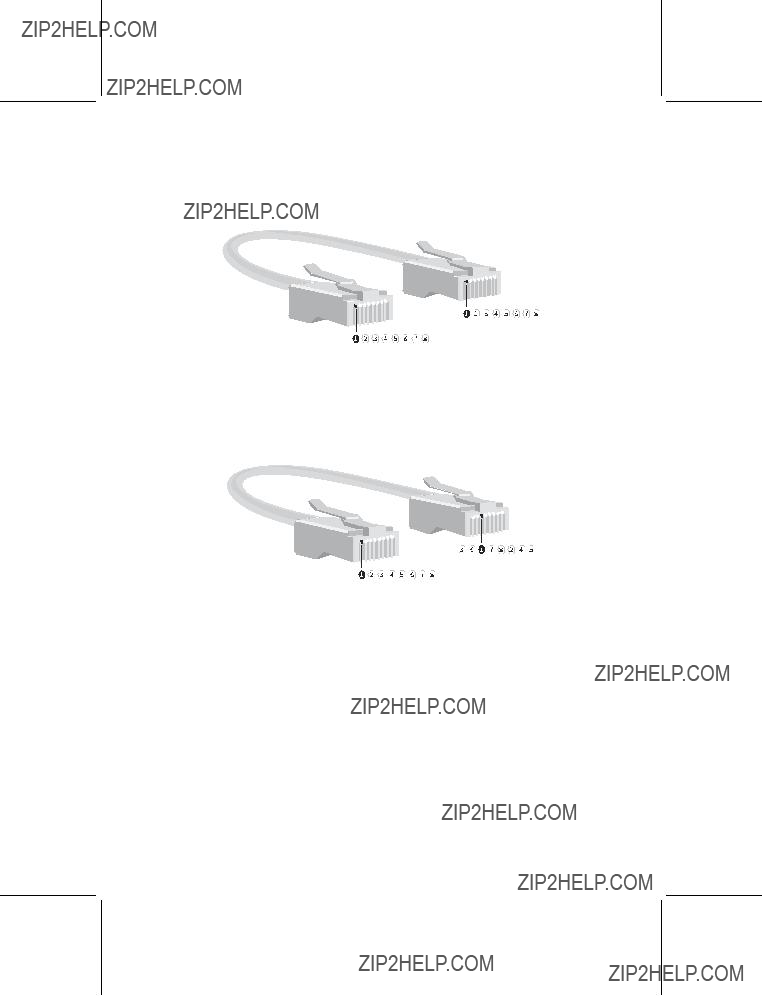
In a
The numbers represent wire colors.
Crossover Ethernet Cable
In a crossover Ethernet cable, the order of the colored wires is different at both ends, as shown in the following illustration.
The numbers represent wire colors.
Which Cable Should You Use?
To connect your base station to a broadband modem, you should use either the cable that came with your modem or the same type of cable that came with your modem,
To connect your base station to one or more computers, you should use straight- through Ethernet cables. If the blue cable provided with your base station is not long enough for your needs, you can use any
8Microsoft Broadband Networking Wireless Base Station User???s Guide
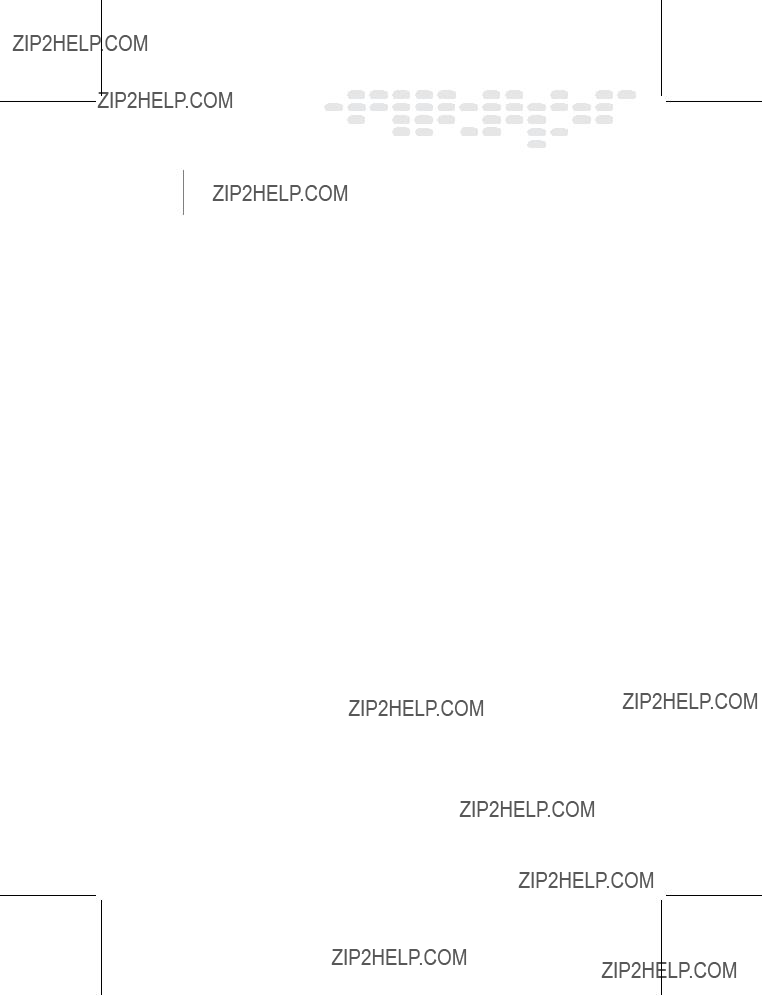
2 setup
Using the Setup Wizard
This chapter will guide you through the setup process for your Microsoft?? Broadband Networking Wireless Base Station. The procedures described in the Typical Setup section of this chapter will help you set up your base station by using the wizard on the Setup CD. Typical Setup is recommended because the Setup Wizard identifies and configures a variety of Internet and wireless network settings.
To use the Typical Setup steps, you will need:
OA computer that has an Ethernet port and is running Microsoft Windows?? XP, Windows Millennium Edition, Windows 98, or Windows 98 SE operating system.
OAn external broadband modem with an Ethernet port.
You should not use the Typical Setup steps if any of the following apply to you.
OYou want to set up the base station from a Windows
OYou don???t have a computer with an Ethernet port. See ???Setting Up the Base Station Wirelessly??? later in this chapter.
OYou want to set up the base station from a computer that isn???t running Windows. See Chapter 3.
OYou don???t want to run the Setup Wizard to set up the base station. See Chapter 3.
OYou have an existing network with a base station, gateway, or router, and want to use this base station as an access point. See the

Typical Setup
The steps in this section correspond to the steps that you will go through in the Setup Wizard on the Setup CD. If possible, you should use the Setup Wizard whenever you set up a Microsoft Broadband Networking product on your network.
Note You can use the Setup and Network Utility (v.2.0) CD that comes with this base station to install all current and previous versions of Microsoft Broadband Networking products. If you have other Microsoft Broadband Networking products on your network, you do not need to keep multiple copies of this CD and you can discard earlier versions of this CD.
Step 1: Gather Components, Tools, and Information
1. Check if any of the following special situations apply to you.
10 Microsoft Broadband Networking Wireless Base Station User???s Guide

2.Take the following items to the computer that is currently connected to your broadband modem. If this computer does not meet the base station setup requirements, you can use any other computer that does. However, you will need to enter your Internet settings manually.
O Setup and Network Utility CD
O Microsoft Wireless Base Station
O Blue Ethernet cable included in the box
O Power supply (Use only the AC adapter included in the box.)
O Blank floppy disk included in the box
O This User???s Guide
OInstallation CD for your Windows operating system if your computer is running Windows Me, Windows 98, or Windows 98 SE
Step 2: Run the Setup Wizard
1.Insert the Setup CD into the CD drive. If the Setup Wizard does not start automatically after a few seconds, open My Computer,
Note During setup, you may be prompted to restart your computer or insert your Windows operating system CD. You may also need to specify the location of the required setup files on the Windows CD. Do this by typing the drive letter of your CD drive and the appropriate directory (for example, D:\win98).
2.On the first screen that appears, click Set Up a Product.
The wizard will detect any components that are missing on your computer and specify which of these components are required for setup and which are optional.
3.Continue following the instructions in the wizard to install missing components (as necessary).
4.When the wizard asks whether you are setting up a base station or an adapter, click
Base station.
5.When the wizard asks which base station you are setting up, click
6.Continue following the instructions in the Setup Wizard. If you have a question, click a Help link on the screen for more information.
If you need to cancel setup before it is complete, you can rerun the Setup Wizard. When the Setup Wizard restarts, click Set Up a Product.
Chapter 2: Setup 11

Step 3: Connect the Base Station
1.When the Setup Wizard prompts you to connect your base station, place the base station close to your modem and computer, and near the center of your intended network. If you want to position the base station vertically, attach the provided stand. For more information about optimal placement of your base station, see ???Placement of Wireless Components??? in Chapter 1.
Note Do not turn off your computer while you connect your base station.
2.Disconnect the modem Ethernet cable from the back of your computer, and then connect it to the To Modem port on the back of the base station.
Important Use the modem???s original Ethernet cable or one of the same type (straight- through or crossover) to connect the modem to the base station. For more information, see ???Ethernet Cables??? in Chapter 1.
3.Connect one end of the blue Ethernet cable that came with your base station to one of the Ethernet ports on the back of the base station, and then connect the other end to an Ethernet port on your computer.
4.Plug one end of the power supply that came with your base station into the Power port on the back of the base station, and then plug the other end into an electrical outlet. The Power light on the front of the base station will turn orange. Wait for the Power light to turn green.
Your connections should now resemble those in the following illustration.
First computer
Wireless
Base Station
Existing broadband modem
5. Return to the Setup Wizard and click Next.
12 Microsoft Broadband Networking Wireless Base Station User???s Guide

Step 4: Configure the Base Station
1.Continue following the instructions in the Setup Wizard to:
O Select wireless security options. For more information about wireless security, see ???Making Your Network More Secure??? in Chapter 5.
OSave your wireless network settings. You can use the provided floppy disk for this.
OSet up file and printer sharing on your computer.
Note If your computer is a member of a domain, the Setup Wizard detects this and skips the file and printer sharing part of setup.
2.When you reach the end of the Setup Wizard, click Finish. By default, the Broadband Network Utility starts automatically.
3.Remove the Setup CD from the CD drive and the floppy disk (if used) from the floppy disk drive. Keep your network settings handy for setting up additional computers on your network.
It is recommended that you install the software on all computers on your network, so that you can use the Broadband Network Utility from all of your computers. If you want to do this, run the Setup Wizard on each of your computers and when the Setup Wizard starts, click Install Software Only. (If the computer already has a version of this software installed, this option is called Update Software Only or
Reinstall Software Only.)
Step 5: Test Your Network
1.View the status of your network in the Broadband Network Utility. Make sure that the other computers on your network appear under Network Devices. For more information about using the Broadband Network Utility, see Chapter 4.
2.From a computer with a wireless adapter, open your Web browser and try accessing a Web site such as www.microsoft.com. If your network is working properly, you will be able to access the Internet from the computer you just set up.
What???s Next?
Your base station setup is now complete.
OIf your network is working properly, you can proceed to Chapter 4, ???Network Activities.???
OIf you are having network problems or you cannot connect to the Internet, see ???Network and Internet Problems??? in Chapter 6.
Chapter 2: Setup 13
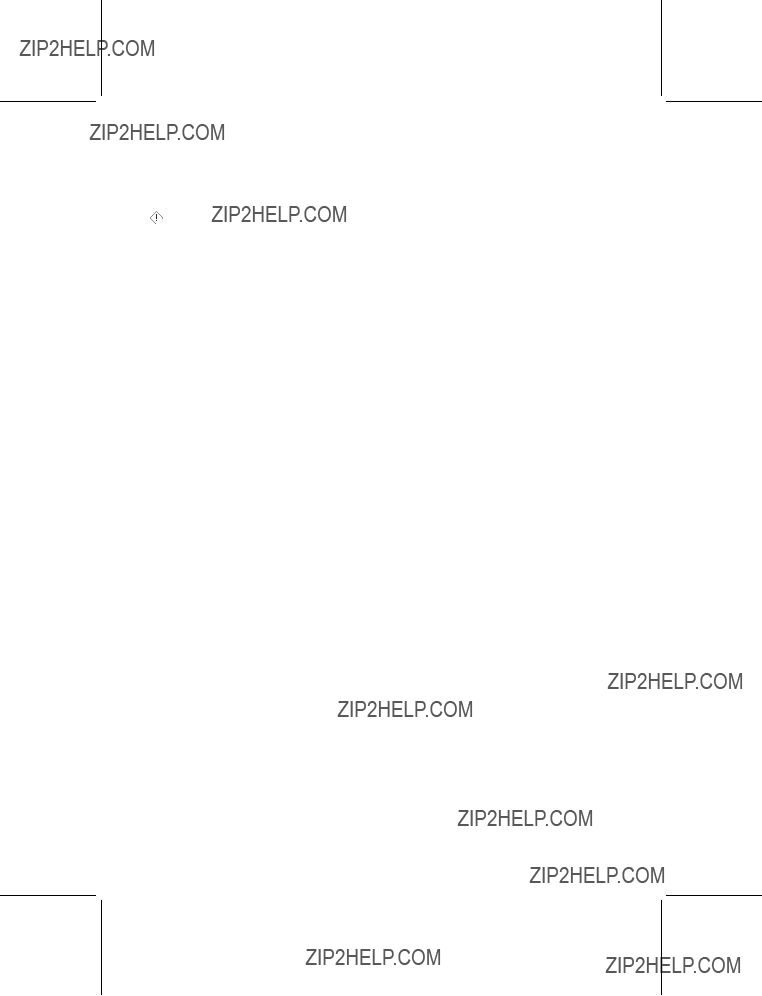
Setting Up the Base Station Wirelessly
It is possible to set up the base station wirelessly by using a Microsoft wireless adapter. Use this setup method only if none of your computers has an Ethernet port.
Important Setting up the base station wirelessly is not recommended, because your Internet and network settings are vulnerable to wireless eavesdropping during Setup.
To set up the base station wirelessly
1.Locate and write down your Internet settings. For instructions, see Appendix A, ???Locating Your Internet and Network Settings.??? For most Internet connections, you will need your host name and media access control (MAC) address. For a PPPoE connection, you will need your user name, password, and service name. For a static Internet protocol (IP) address, you will need your IP, subnet mask, and default gateway addresses.
2.Disconnect your modem from your computer, and turn off the modem (or unplug it).
3.On the computer that was connected to your modem, run the Setup Wizard.
4.On the first screen that appears, click Set Up a Product.
The wizard will detect missing components and help you install them.
5.When the wizard asks what you want to install, click Base station.
If you have not yet installed your Microsoft wireless adapter, the wizard will alert you that you need to install an adapter. Continue following the steps in the wizard to set up the wireless adapter.
6.When the wizard asks which base station you are setting up, click
7.When the wizard asks what type of modem you have, click External broadband modem, connected with Ethernet cable. (Select this option even if your modem made a USB connection to your computer before you disconnected it in step 2.)
Because your modem is no longer connected to your computer, the Setup Wizard will alert you that it cannot detect your Internet connection.
8.Click Next to proceed without an Internet connection. Later, you will be able to enter the Internet settings you saved in step 1 of this procedure.
9.When the Setup Wizard prompts you to connect your base station, connect an Ethernet cable from your modem to the To Modem port of the base station, and then plug in the base station power cord. Your modem is now connected to the base station. Do not connect your computer to the base station.
10.Plug in and turn on your modem.
11.When the Setup Wizard asks you for your Internet settings, enter the Internet settings that you recorded in step 1 of this procedure.
12.Continue following the steps in the Setup Wizard to set up wireless security, to enable file and printer sharing, and to save your network settings.
14 Microsoft Broadband Networking Wireless Base Station User???s Guide
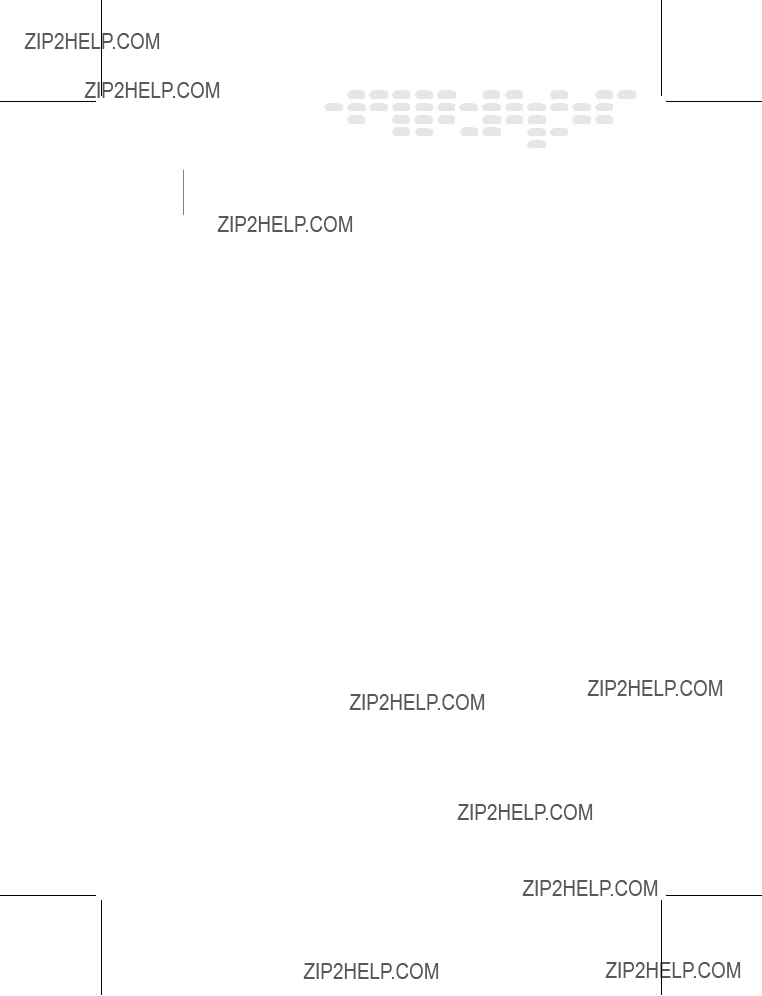
3 custom setup
Configuring the Base Station Manually
The Base Station Management Tool is a
You should use the Base Station Management Tool for setup only in the following situations:
OThe computer where you will configure the base station is not running Microsoft?? Windows?? operating system.
OThe computer where you will configure the base station is running Windows 2000.
OYou are an advanced user and you do not want to use the Setup Wizard.
In all other situations, you should run the Setup Wizard to configure your base station. The Setup Wizard automatically configures the base station with your Internet and other network settings. For information about configuring the base station by using the Setup Wizard, see Chapter 2, ???Setup.???
In addition to configuring your base station for initial setup, you can also use the Base Station Management Tool to manage your network settings, customize security options, and establish special network requirements such as a Web server. For information about these options, see the

Base Station Setup
To complete this setup procedure, you must have a computer with an Ethernet port and an external, broadband modem with an Ethernet port.
Step 1: Connect the Base Station
1.Position the base station close to your modem and computer, and then turn off your modem.
2.Disconnect your modem cable from the Ethernet port on the back of your computer. Leave the other end of the cable connected to the modem. Connect the cable to the port labeled To Modem on the back of the base station.
3.Connect one end of the blue Ethernet cable that came with your base station to the Ethernet port labeled 1 on the back of the base station and connect the other end to the Ethernet port on the back of your computer.
4.Plug one end of the power supply that came with your base station into the Power port on the back of the base station, and plug the other end into an electrical outlet. The Power light on the front of the base station will turn orange. Wait for the Power light to turn green.
Step 2: Open the Base Station Management Tool
You can open the Base Station Management Tool directly from a Web browser, such as Microsoft Internet Explorer 5 or later or Netscape Navigator 6.0 or later.
1.From the computer connected to the base station, open your Web browser, and then type the Internet protocol (IP) address of the base station in the address field. By default, this address is http://192.168.2.1. However, you can change this address in the Base Station Management Tool.
2.To log on, type the default base station password admin.
Step 3: Establish the Base Station Password
Access to the Base Station Management Tool is password protected to help ensure that only users who know the base station password can change your network configuration. You can use the default password, admin, to access the base station for the first time. You should, however, create a new password at the earliest opportunity.
Note It is a good idea to change your password every two to three months, or more frequently if you are concerned that an unauthorized person has administrative access to the base station.
1.From the Home page of the Base Station Management Tool, click Management, and then click Change Password.
2.In the Current password box, type your current password.
3.In the New password box, type a new password. Use a minimum of 3 characters, but no more than 16 characters. The base station password is case sensitive.
16 Microsoft Broadband Networking Wireless Base Station User???s Guide

4.In the Retype new password box, type the new password.
5.To save the new password, click Apply.
Be sure to store your password in a safe place. If you forget or misplace your password and cannot log on to the Base Station Management Tool, you can restore the base station to the factory default settings from the base station itself, and then use the default password admin to open the Base Station Management Tool. For more information about restoring factory default settings to the base station, see Chapter 1, ???Introduction.???
Step 4: Establish Your Internet Settings
On the Wide Area Network page of the Base Station Management Tool, you must specify whether you have a dynamic, static or
If you need assistance determining your Internet settings, see Appendix A, ???Locating Your Internet and Network Settings.???
1.From the Base Station Management Tool, click Wide Area Network. On the Wide Area Network page, under Internet Connection Type, select the type of Internet connection provided by your ISP.
2.Enter the information required for your specific Internet connection type.
O If you selected Dynamic, under Dynamic Connection, specify a host name if your ISP requires it. Specify the DNS primary and secondary addresses if your ISP provided you with this information. If you are replacing an existing base station, router, or gateway with the Microsoft base station, specify the media access control (MAC) address of that device in the MAC Address box, and then click Clone MAC Address. Otherwise, specify the MAC address of the adapter that was connected to the modem in the MAC Address box, and then click Clone MAC Address. For information about MAC addresses, see Microsoft Broadband Network Utility Help.
OIf you selected Static, under Static Connection, type the IP address, subnet mask, default gateway IP address, and DNS addresses provided by your ISP.
OIf you selected PPPoE, under
3.To save the wide area network (WAN) settings you have entered, click Apply.
Chapter 3: Custom Setup 17

Step 5: Establish Your Wireless Settings
The wireless settings of all the devices on your network must match the wireless settings you provide for the base station. Be sure to note the settings you enter on this page so you can establish the same settings when you configure wireless adapters or other network devices.
1.From the Base Station Management Tool menu, click Wireless.
2.Select the Enable wireless access check box.
3.Type the wireless network name in the Wireless network name (SSID) box. The wireless network name, also known as the Service Set Identifier (SSID), identifies your network. The network name is case sensitive and cannot exceed 32 characters.
4.To apply these wireless settings, click Apply.
Step 6: Establish Your Wireless Security Settings
The base station uses Wired Equivalent Privacy (WEP) to help prevent unauthorized users from joining your network or accessing data that is being transmitted over the network.
1.From the Base Station Management Tool Security menu, click Wireless Security.
2.Under Wired Equivalent Privacy (WEP), select the Enable wireless security check box.
3.In the Encryption strength
4.If you selected
5.If you selected
6.To enable the wireless security settings you have entered, click Apply.
Note The wireless security settings of all the devices on your network must match the wireless security settings you provide for the base station. Be sure to note the settings you enter on this page so you can establish the same settings when you configure wireless adapters or other network devices.
18 Microsoft Broadband Networking Wireless Base Station User???s Guide

Step 7: Customize Network Settings
You can customize network settings from the Base Station Management Tool. For example, you can perform the following tasks:
OEstablish a Web or mail server on your network by using persistent port forwarding.
OControl access to your network by using MAC filtering.
OControl what computers on your network can access the Internet by using client filtering.
OMap ports for specific Internet games by using
For information about these options, consult Broadband Network Utility Help or the
Step 8: Configure Your Computer
When you set up the base station by using the Base Station Management Tool, you must configure the TCP/IP properties of each computer that you connect to your network. If you are using a Microsoft adapter, the correct settings are established automatically when you run the Setup Wizard. If you are using a
In general, you should configure the computer to use the TCP/IP protocol and to obtain an IP address automatically. However, if you disable the DHCP server on the base station or if you want one or more of your networked computers to use a static IP address, you must configure the computer to use a static IP address. For information about how to establish a static IP address for a computer on your network, see Broadband Network Utility Help.
Note The TCP/IP properties you set are stored on the adapter connected to your networked computer. If you change adapters, you must reconfigure these settings for the computer.
To configure the TCP/IP properties of a computer running Windows 98, Windows 2000, or Windows Me operating systems
1.Click Start, point to Settings, and then click Control Panel.
2.
3.In the Configuration dialog box, select the TCP/IP protocol line that is associated with your network adapter.
4.Click the Properties button, click the IP Address tab, and then select Obtain an IP address automatically.
5.Click the Gateway tab and make sure that all fields are empty, and then click OK. When the Network Properties dialog box appears, click OK again.
6.If you are prompted to supply the original Windows installation files, insert your Windows
7.When you are prompted to restart your computer, click OK.
Chapter 3: Custom Setup 19
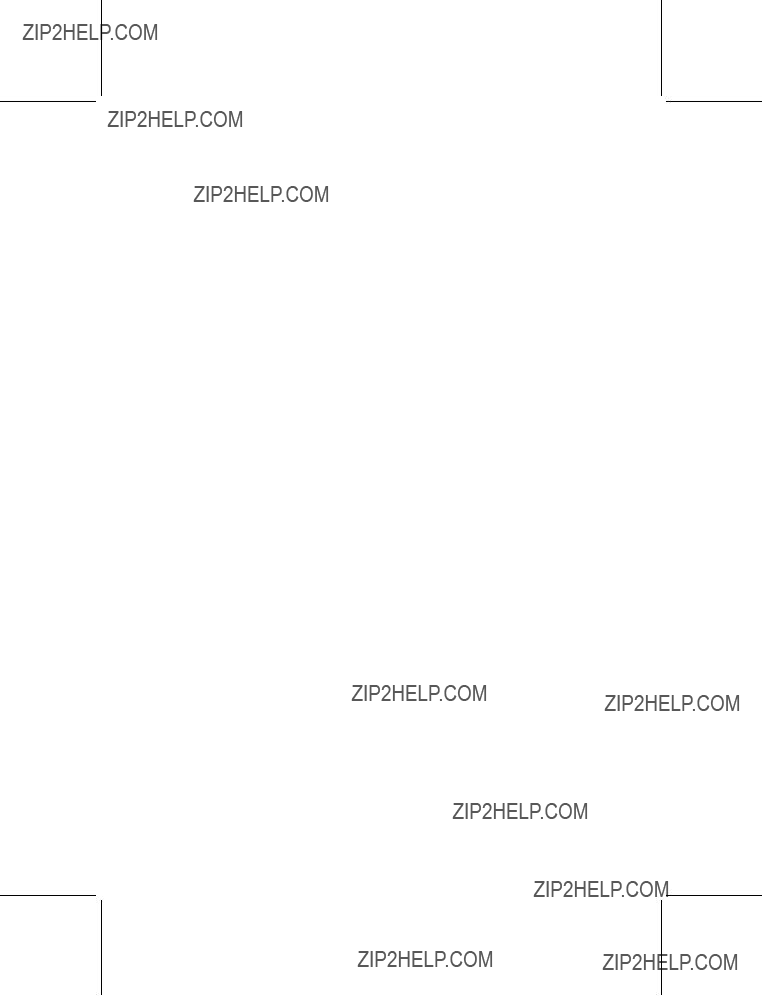
To configure the TCP/IP properties of a computer running Windows XP operating system
1.Click Start, click Control Panel, and then
2.
Connection Status dialog box, click Properties.
3.On the General tab, under This connection uses the following items, click Internet Protocol (TCP/IP), and then click Properties.
4.Click Obtain IP address automatically, and then click Obtain DNS server address automatically.
5.Click OK to close the TCP/IP Properties dialog box, and then click OK to close the
Connection Properties dialog box.
Step 9: Test Your Internet Connection
1.Turn on your broadband modem.
2.From the Home page of the Base Station Management Tool, under Wide Area Network (WAN) settings, check the status of the Broadband connection.
3.If the status is Connected, your setup is complete. If the status is Disconnected, click Renew if you have a dynamic or static IP connection, or Connect if you have a PPPoE connection. If the status is still Disconnected, confirm your Internet settings with your ISP, and then try to configure the base station again.
20 Microsoft Broadband Networking Wireless Base Station User???s Guide
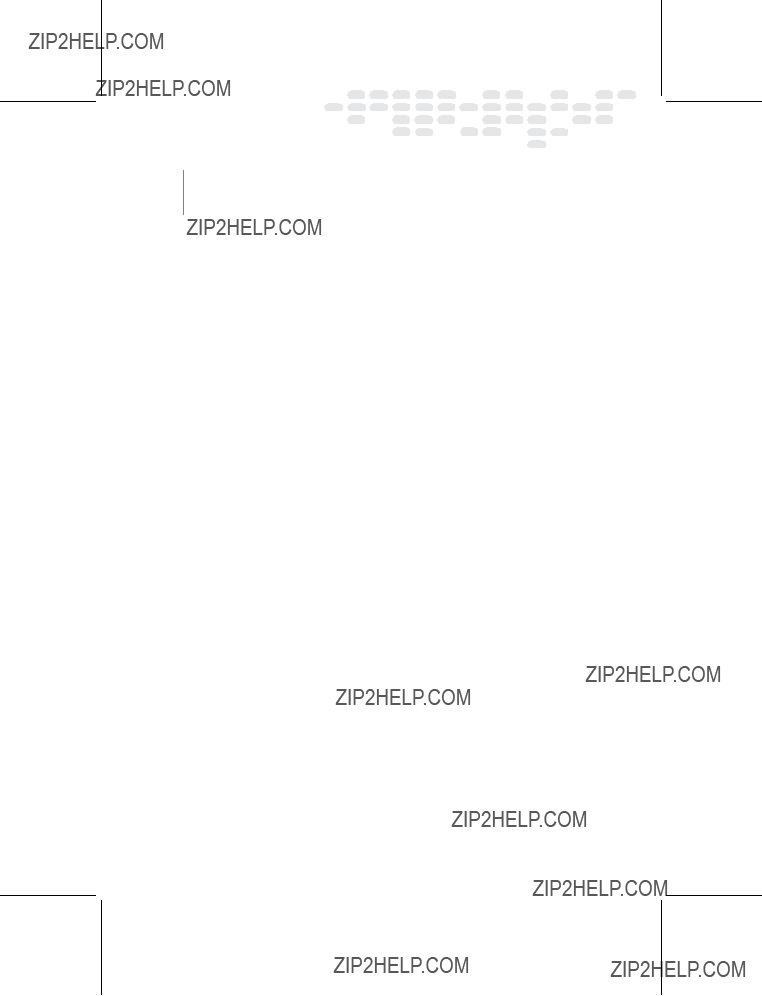
4 network activities
Sharing and Accessing Network Resources
After setting up your wireless network, you can perform common network tasks, such as making files and printers available to other computers (a process called ???sharing???), and then accessing these shared resources. You can also use the same Internet connection from multiple computers on your network.
This chapter describes how to:
OLog on to your network.
OUse the same Internet connection from multiple computers on your network.
OStart the Broadband Network Utility (to view shared resources access Help to troubleshoot problems).
OShare files and folders from one computer and then access them from other computers.
OShare a printer that is connected to one computer and then print to it from other computers.
OMake other peripheral devices available to computers on your network.
ORead
OPlay games on your network and on the Internet.

Logging on to Your Network
After starting your computer, you must always log on to your network to access files, printers, and other resources that have been shared.
If you have Microsoft?? Windows?? 98 or Windows Millennium Edition operating system, do not click Cancel during the logon process, even if you decide to leave your password blank. Type your user name, type your password (or leave it blank), and then click OK.
Do not click Cancel
If you are already using Windows, and you haven???t yet logged on to your network, you can log off from Windows and then log back on.
To log off and log back on to your network
1.Click Start.
2.Click Log Off. (If Log Off does not appear on your Start menu, click Shut Down, make sure that Log Off is selected in the
3.Log on to your network.
After you log on to your network, you can perform certain network functions, such as opening shared files.
Using an Internet Connection over a Network
Now that you???ve installed the base station, all of the computers on your network can use one Internet connection. Multiple computers can even use the Internet connection at the same time, without making the Internet connection speed noticeably slower for each person.
You can access the Internet from each computer in the way you are used to, for example, by simply starting your Web browser and visiting a Web site. Note that, to browse the Web, each computer must have its own Web browser (such as Microsoft Internet Explorer) installed.
22 Microsoft Broadband Networking Wireless Base Station User???s Guide

Using the Broadband Network Utility
The Microsoft Broadband Network Utility is automatically installed on your computer when you run the Setup Wizard. You can use the Broadband Network Utility to view other computers on the network and access shared files on those computers.
The Help system in the Broadband Network Utility provides additional information about Microsoft Broadband Networking products, using the Broadband Network Utility, performing common tasks on your network, and troubleshooting network problems. The Help system, the Network Troubleshooter, and Web Help are all available on the Help menu.
Note For information about using the Broadband Network Utility to change wireless settings or update software, see Chapter 5.
To start the Broadband Network Utility
OClick Start, point to Programs, and then click Microsoft Broadband Network Utility.
O
The Internet connection status of your computer
The right pane of the Broadband Network Utility displays information about the computers connected to your network. This information automatically refreshes at regularly scheduled intervals. You can also manually refresh the list.
Note To see the full computer name and Internet protocol (IP) address of a computer in the Network Devices list, hold the mouse pointer over the computer in the list.
To refresh the Network Devices list
O
To remove an inactive device from the Network Devices list
O
In the sections that follow you will read about how to use the Broadband Network Utility to access shared files on network computers and to join other networks.
Chapter 4: Network Activities 23

Using Files and Folders over a Network
This section explains how you can make files and folders available on one computer (a process called ???file and folder sharing???) and then access those files and folders from other computers on your network.
To make using files and folders over a network easy, you should assign all computers on your network to the same workgroup if you haven???t done so already. For information about how to do this, look up ???workgroup??? in Windows Help.
Important Do not assign a computer (such as a work laptop) to your workgroup if the computer is already a member of a domain, and you intend to reconnect to the domain later.
Step 1: Make your files and folders available to the network
You may have set up file sharing on your computers when you set up the base station and adapter. If you did not set up file sharing when you set up your hardware, you can enable it by using the Windows operating system. You can also use Windows to change or further refine the settings you selected during Setup. For more detailed instructions and information about sharing files and folders, see Windows Help.
Note If you have Windows 2000 or Windows XP, you need to have sufficient privileges (or be the network administrator) to share folders with others. For more information, look up ???administrator??? in Windows Help.
File and folder sharing is configured from the computer that contains the files and folders you wish to share. You can share an entire drive with the network, or you can share specific folders. For example, if you store photographs of your children in a folder named ???Kids??? on your computer, and you want to make the photographs available to your network, you can choose to share only the Kids folder.
Important Although you can share files, printers, and other devices on your network, you cannot share software programs, such as Microsoft Word or Microsoft Excel.
To share a folder or drive on your computer (in Windows XP)
1.Enable file sharing on your computer if you have not already done so. You need to do this only once. For information about how to enable file sharing, see Windows Help.
2.Open My Computer.
3.Browse to the drive or folder that you want to make available to other computers on your network, and then select it.
4.On the File menu, click Sharing and Security.
5.Click Share this folder on the network. By default, the folder is made available to all of the other computers on your network, and everyone has
6.Click OK.
24 Microsoft Broadband Networking Wireless Base Station User???s Guide
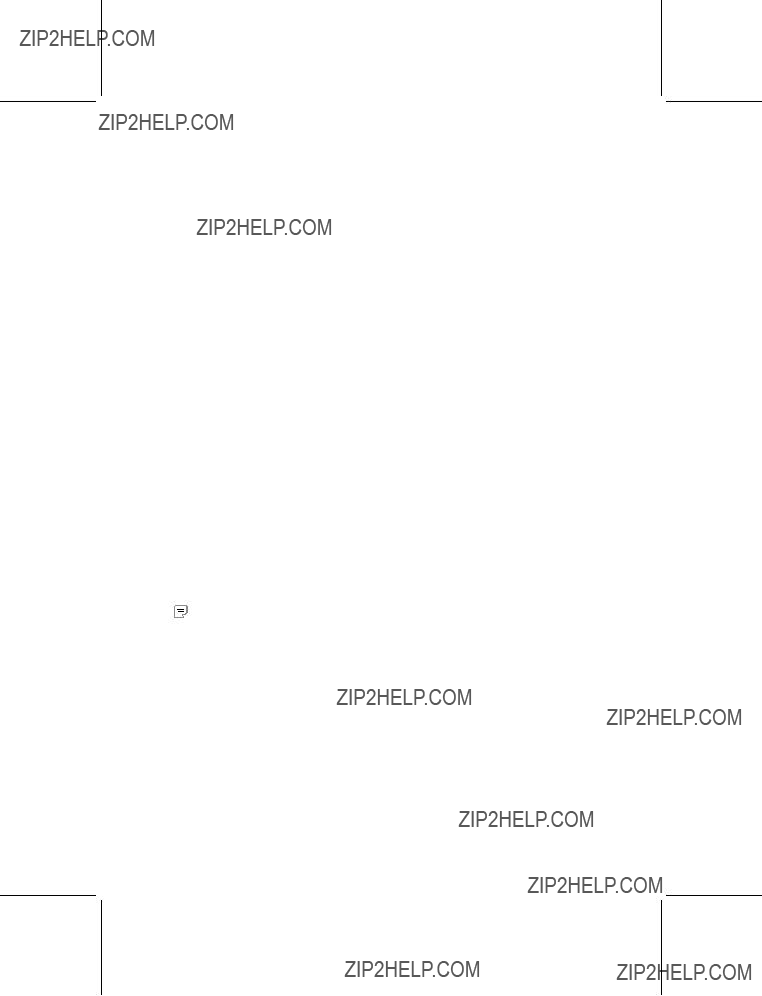
To share a folder or drive on your computer (in Windows 2000)
1.Enable file sharing on your computer if you have not already done so. You need to do this only once. For information about how to enable file sharing, see Windows Help.
2.Open My Computer.
3.Browse to the drive or folder that you want to make available to other computers on your network, and then select it.
4.On the File menu, click Sharing.
5.Click Share this folder. By default, the folder is made available to all of the other computers on your network, and everyone has
6.Click OK.
To share a folder or drive on your computer (in Windows 98, Windows 98 SE, and Windows Me)
1.Enable file sharing on your computer if you have not already done so. You need to do this only once. For information about how to enable file sharing, see Windows Help.
2.Open My Computer.
3.Select the file or folder that you want to make available to other computers on your network.
4.On the File menu, click Sharing.
5.Click Shared as. Change the level of access if you want, and then click OK.
Only the computer users on your network will have access to the files you share. At times, you may want to prevent certain users, such as your children, from accessing particular folders and the files they contain. If you want to increase the security of your shared files, you can assign permissions and passwords to your files and folders. For more information, look up ???permission??? and ???access control??? in Windows Help. (In Windows Millennium Edition, look up ???controlling access.???)
Note For a computer???s files and folders to be available to the network, the computer must be turned on and logged on to the network. Also, if the computer is turned on but in sleep mode, it will not be accessible from the network. For more information, look up ???power options??? in Windows XP Help, or ???power management??? in Windows Me, Windows 2000, and Windows 98 Help.
Chapter 4: Network Activities 25

Step 2: Access shared files
To access shared files and folders, you can use the Broadband Network Utility and My Computer.
Note If you want to work with shared files on a computer that does not have the Broadband Network Utility installed, you can use Network Neighborhood or My Network Places in Windows instead. For more information, see Windows Help.
To access shared files on other computers
1.Start the Broadband Network Utility.
2.In the Network Devices list,
3.Use the window that appears to browse the shared folders on that computer and locate the file.
Note If the shared files on the other computer do not appear, you might need to restart the computer you are using.
To copy a file or folder from a network computer to your local computer
1.Use the preceding steps to browse to the shared file or folder that you want to copy.
2.On the File menu, point to Explorer Bar, and then click Folders. The Folders bar appears in the left pane.
You can now see the hierarchical structure of drives, folders, and files on your computer and on the other computers that are part of your network.
3.Drag the file or folder that you want to copy from the right pane to a local drive or folder in the Folders bar.
Note If the shared network folder has
Using a Printer over a Network
Before you can use a printer that is attached to another computer on your network, you will need to do the following:
OMake the printer available to other computers (this is also known as ???sharing??? a printer). Sharing must be configured on the computer to which the printer is attached.
ORun the Add Printer Wizard to install printer drivers on each computer that you want to print from.
Note Some printer drivers are not designed for sharing printers. For more information, see the documentation that came with your printer, or see if additional drivers are available on the printer manufacturer???s Web site.
The procedures for sharing a printer and installing drivers differ depending on your version of the Windows operating system. For more detailed instructions, look up ???sharing printers??? in Windows Help.
26 Microsoft Broadband Networking Wireless Base Station User???s Guide

To access a shared printer from another computer on the network, use the following procedure.
To print to a shared printer that is attached to another computer on the network
1.Open the document that you want to print, such as a document in Microsoft Word.
2.On the File menu, click Print.
3.In the Print dialog box, select the shared printer from the list of printers, and then click OK.
Note The computer that is connected to the printer must be turned on for the other computers on the network to use the printer.
Using Other Peripheral Devices over a Network
In addition to using most printers over a network, you can use other peripheral
Before you can use a device that is attached to another computer on your network, you will need to do the following:
OMake the device available to the network (this is also known as sharing the device). This is configured from the computer to which the device is attached.
OInstall any necessary drivers or utilities on each computer from which you want to use the device. For more information, see the documentation that came with the device.
About Reading
You can access your
Keep in mind the following: If you download
If you want your
Chapter 4: Network Activities 27
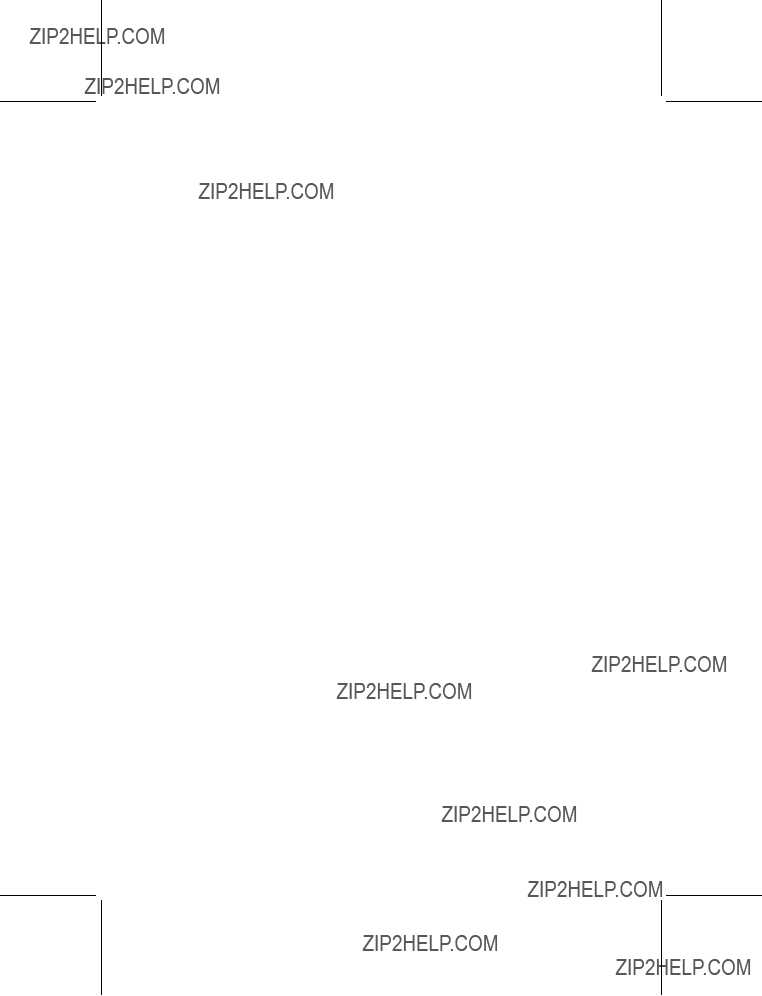
Playing Games on Your Network and on the Internet
Many of the most popular games now have multiplayer capability, allowing two or more players to compete by using a local network. With
Most games come with documentation that explains all you need to know to configure your network for multiplayer gaming. However, the following steps might help you prepare for playing games over the network:
OIf you have purchased a multiplayer game, be sure to install it on each computer on the network that will be used for playing games.
OMake sure that the network protocols necessary to run the games that you want are installed on each computer on your network. For more information, see the documentation that came with your games.
OIf you are playing an
OIf you have problems connecting to an
For information about playing games on the Internet, and for other
28 Microsoft Broadband Networking Wireless Base Station User???s Guide

5 network management
Understanding Network Maintenance and Security
Now that you have a wireless network, it is a good idea to familiarize yourself with some important network management tasks.
This chapter describes how to monitor network performance, update network software, and improve network security.
Monitoring Your Network
The Microsoft?? Broadband Network Utility is your principal tool for viewing the status of your network and connected devices.
Note For information about starting the Broadband Network Utility and using it to access shared files or to join other networks, see Chapter 4.
View Status
You can view information about the status of your computer, your workgroup or domain, and your Internet connection in the left pane of the Broadband Network Utility. If there is a problem with your network or Internet connection, the Broadband Network Utility displays a link to the Network Troubleshooter, which you can use to help resolve the problem.
Note You can also view information about the status of your network connection by resting the pointer on the Broadband Network Utility icon in the notification area at the far right of the Microsoft Windows?? taskbar.
View Network Devices
The right pane of the Broadband Network Utility displays information about the computers, base stations, and other devices connected to your network. This information automatically refreshes at regularly scheduled intervals. You can manually refresh the list.
To refresh the network device list
O
Refresh.

Updating Software, Drivers, and Firmware
Occasionally, Microsoft may provide upgrades to the Broadband Network Utility software, network drivers, or firmware. When an upgrade is available on the Microsoft Broadband Networking Web site, the Broadband Network Utility Update Service will automatically notify you, unless you turn the update service off. After you log on to a networked computer, a message will appear in the notification area of the Windows taskbar with a link to the Microsoft Broadband Networking Web site.
If you turn the update service off, you can check for upgrades on the Web site from the Broadband Network Utility.
To upgrade software, drivers, or firmware
1.Start the Broadband Network Utility.
2.On the Help menu, click Check for Updates Online.
3.Follow the instructions on the Microsoft Broadband Networking Web site to download the latest software, drivers, and firmware.
Making Your Network More Secure
Protecting the data and programs on your network computers from security threats, such as computer viruses and hackers, is very important. The following sections provide general information about steps you can take to protect your network.
Help Protect Your Network from Computer Viruses
To avoid having a problem with viruses on your network, consider the following suggestions:
OInstall an antivirus program on each computer on your network and use it regularly to check your computers for viruses. Remember to update the antivirus program on a regular basis.
OLearn the common signs of viruses: unusual messages that appear on your screen, decreased system performance, missing data, and inability to access your hard drive. If you notice any of these problems on your computer, run your antivirus program immediately to minimize the chances of losing data.
OEducate yourself about how viruses are commonly spread so that you do not spread one yourself:
ODo not load a program from an untrusted source onto one of your network computers. Files from the Internet or online bulletin boards are particularly risky.
ONever open attachments to
OUse your antivirus software to scan all floppy disks before copying or opening files from them, or before starting your computer from them.
30 Microsoft Broadband Networking Wireless Base Station User???s Guide
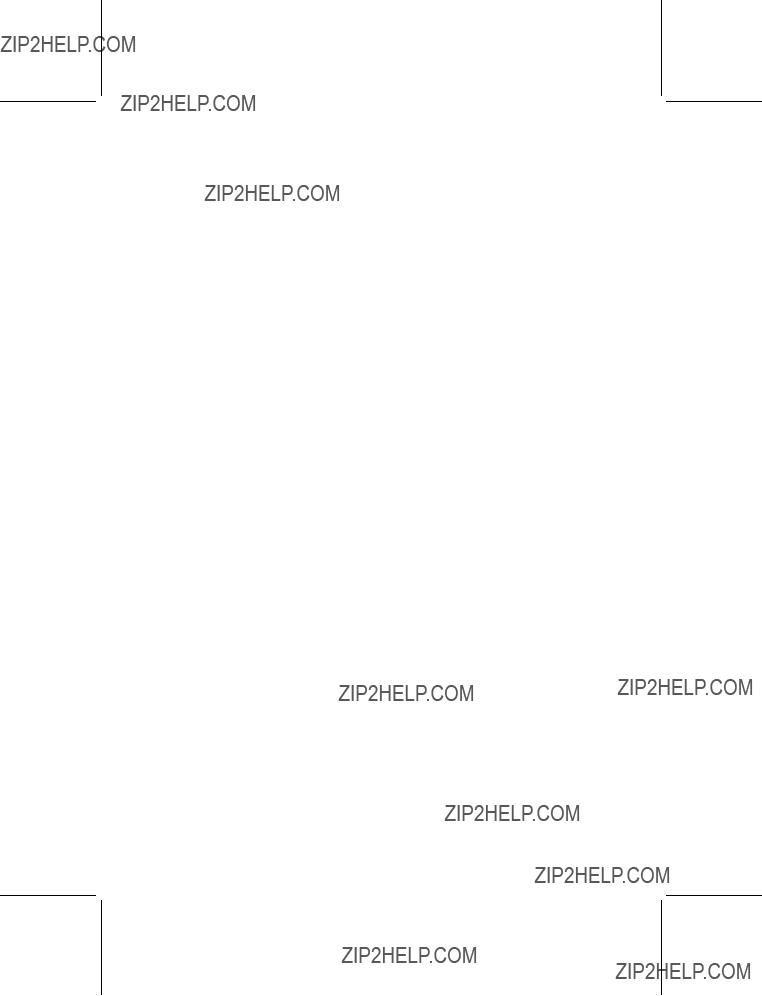
Help Protect Your Network from Hackers
The Microsoft Wireless Base Station provides network address translation (NAT) and a firewall to help secure your system from hacker attacks over the Internet.
NAT hides the Internet Protocol (IP) addresses of the computers on a network from the Internet so that only the base station IP address is visible. Without the IP address, it is more difficult for hackers to access the computers on your network.
The firewall specifies what information can be communicated from the computers on your network to the Internet, and from the Internet to the computers on your network. Like an actual firewall built to prevent fire from spreading between adjoining buildings, computer firewalls help prevent the spread of unauthorized communication between an individual computer or group of networked computers and the Internet.
If you are using the base station as an access point only, NAT and the firewall are disabled. In this case, you should make sure that another device on your network provides a firewall and NAT for your network.
Help Protect Your Network from Unauthorized Access
Because wireless networks use radio signals, it is possible for other wireless network devices outside your immediate area to pick up the signals and either connect to your network or capture the network traffic. To help prevent unauthorized connections or the possibility of eavesdroppers listening in on your network traffic, do the following:
OPlace the base station toward the center of your home. This decreases the strength of the signal outside your home.
OUse media access control (MAC) filtering. You can use MAC filtering to grant or deny users the ability to connect to your network based on the MAC addresses of the adapters they are using. For information about MAC filtering, see Broadband Network Utility Help.
OEnable
Chapter 5: Network Management 31


6 troubleshooting
Finding Answers to Common Problems
This chapter will help you solve the most common installation and setup problems that you may have with your Microsoft?? Broadband Networking components. The following types of issues are covered:
OSetup and Hardware Problems
ONetwork and Internet Problems
OFile and Printer Sharing Problems
If the problem you are experiencing is not covered in this chapter, you can find more troubleshooting information in Broadband Network Utility Help, or on the Microsoft Hardware Web site at www.microsoft.com/hardware. If you have finished Setup, you can start the Broadband Network Utility by
Setup and Hardware Problems
This section will help you solve problems you might encounter while running the Setup Wizard or connecting your Microsoft Broadband Networking device to your network for the first time.
Note Run the Setup Wizard before connecting your new hardware or disconnecting your existing Internet connection. This is important because the Setup Wizard will help detect your current Internet settings and configure your new Microsoft Broadband Networking hardware.
The Setup Wizard will not start or locks up when I run it on my computer.
The following troubleshooting steps will help you track down and solve the problem.
OVerify that your computer conforms to the minimum system requirements. The packaging lists system requirements for your Microsoft Broadband Networking hardware and software. If your computer does not meet the minimum requirements, the Setup Wizard might not function correctly or might not start at all.
OYour hard disk might be full. Make sure that you have enough free hard disk space to install the network drivers and Broadband Network Utility. You can check the amount of free hard drive space by opening My Computer and selecting your hard drive in the main window.
OVerify that your CD drive is functioning correctly. Try launching the Setup Wizard by
Contact Technical Support for more information about replacing a defective CD.

Setup does not recognize my wireless base station.
The following troubleshooting steps will help you track down and solve this problem.
OVerify that all status lights are illuminated. Make sure that the Power light on your wireless base station is illuminated to indicate that the base station is receiving power.
If the Power light is flashing, you may need to reset the base station. To reset, unplug the base station, wait at least 10 seconds, and then plug it back in again. Wait for the Power light to turn green.
OIf enabled, turn off Network Address Translation (NAT) on the modem. Some broadband modems have
If your base station is connected with an Ethernet cable:
OMake sure that all cables are securely connected. Check that the cables in your network are securely connected to the correct ports. Check all of the following connections: all power cables, the Ethernet cables between the broadband modem and the base station, and any Ethernet cables attaching computers to the
base station.
Check the setup instructions for your broadband modem to make sure that you are using the correct type of Ethernet cable to connect to your modem, either straight- through or crossover.
If your base station is connected wirelessly:
OCheck the distance to your base station. If you are setting up the base station indoors over a wireless connection, make sure that your base station is near your computer.
34 Microsoft Broadband Networking Wireless Base Station User???s Guide

Setup can???t detect the Internet after I connect my new base station to a broadband modem.
The following troubleshooting steps will help you track down and solve the problem.
OMake sure that all cables are securely connected. Check that the cables in your network are securely connected to the correct ports.
Check all power cables, the Ethernet cables between the broadband modem and your base station, and any Ethernet cables between the base station and the computer where you are running the Setup Wizard.
OVerify that all status lights are illuminated. Make sure that the status lights are illuminated on your network devices, especially on your base station and modem, to indicate that each connected Ethernet port is working properly. If these lights are not illuminated, try a different network port.
If the status light is not illuminated between your base station and broadband modem, check the setup instructions for your broadband modem to make sure that you are using the correct type of Ethernet cable to connect to your modem, either
OReset your broadband modem. This process will involve turning your broadband modem off and back on again. Follow the instructions from your broadband modem documentation or Internet service provider (ISP). After the broadband modem finishes resetting itself and connects to your ISP, try the Setup Wizard again.
OSetup needs an active Internet connection to detect your Internet settings.
Before you install your new base station, make sure that your existing Internet connection is working correctly from your computer. If you do not have an active Internet connection, Setup cannot determine your ISP settings, and you must set up the base station by manually entering your ISP settings.
If you have already disconnected your existing Internet connection during Setup, try reconnecting your original Internet connection and verify that you have Internet access. You can then run the Setup Wizard again from your Broadband Networking CD to install your new hardware.
OReset your base station. To reset the Microsoft base station, unplug the power adapter from the base station and then plug it back in. After the Microsoft base station has initialized completely and the lights are green, have the Setup Wizard try detecting the Internet again.
If you are still having problems connecting to the Internet, you may need to clone the media access control (MAC) address from your previous networking hardware. For more information, see the next topic.
Chapter 6: Troubleshooting 35
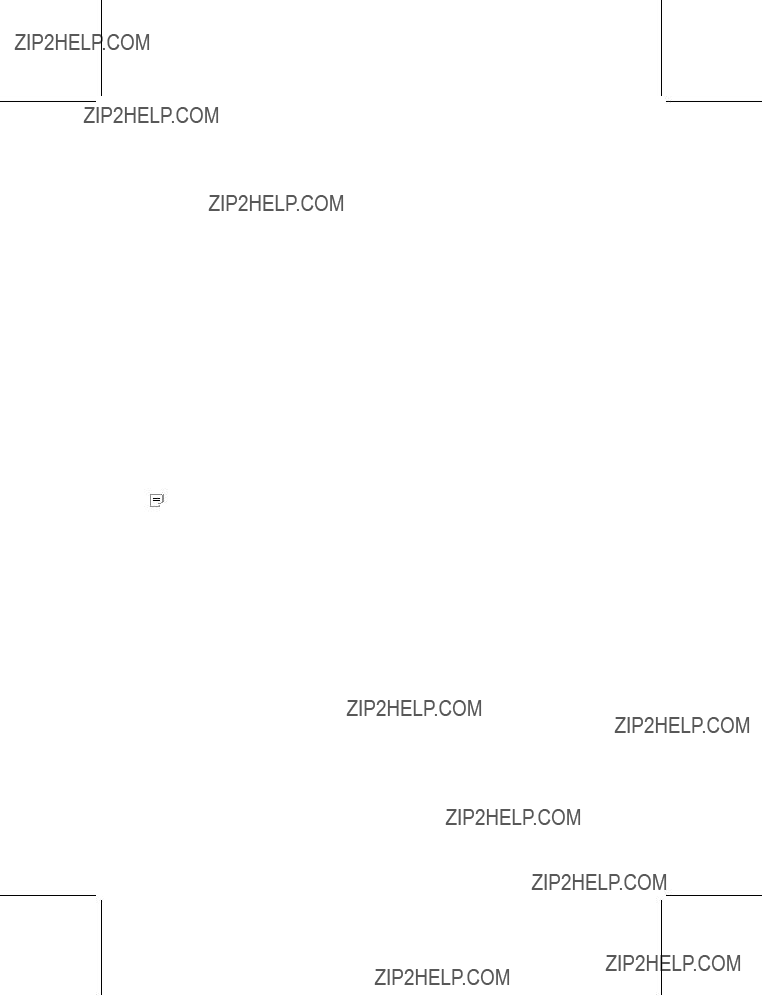
After I install a new base station on my network, my Internet connection no longer works.
Some ISPs record the MAC address of the network adapter, modem, or router that you used when you first connected to the Internet. If you have added or replaced a base station in your network configuration, your ISP might not recognize the new base station???s default MAC address and will deny you access to the Internet.
To solve the problem, you need to clone, or copy, the MAC address from your original device to the new base station. Each network adapter or router that you use has a MAC address that is assigned at the time of manufacture and is printed on a label attached to the back of the device. After you have written down the MAC address from your original adapter or router, you can clone the address to the new base station.
To clone a MAC address
1.Start the Broadband Network Utility.
2.From the Tools menu, click Base Station Management Tool.
3.Enter your administrator password.
4.Click Wide Area Network.
5.In the MAC address boxes, type the MAC address of the original adapter or base station that was connected to the Internet before you connected your new base station. The MAC address normally appears on the label on the underside of
the device.
6.Click Clone MAC address.
Note It is a good idea to record the MAC address of the adapter or router in your notes so that, if you lose your settings or no longer have the device, you do not lose your ability to connect to the Internet.
36 Microsoft Broadband Networking Wireless Base Station User???s Guide

I am having problems upgrading or restoring my base station firmware.
Firmware is the software that is loaded into your base station to control its basic operations. If you have a problem upgrading or restoring your base station firmware, try the following troubleshooting steps to track down and solve the problem.
OReset the base station. Resetting the base station is similar to restarting your computer, allowing it to clear its memory and reestablish connections with your ISP.
To reset the Microsoft base station, unplug the power cord from the base station and then plug it back in. After the Microsoft base station Power light turns green, you can try again to upgrade or restore firmware by using the Broadband Network Utility.
ORestore the base station to its factory default settings. To return the base station to its factory default settings (for example, if you forget your base station password), you can use the button on the back of the base station to clear all current base station settings. Before you restore your base station, make a backup copy of your base station configuration by using the Broadband Networking Utility. For more information, see Chapter 5, ???Network Management.???
Note Restoring the base station is different from resetting the base station. When you reset the base station, your current network and Internet connections are reestablished without modifying any settings. When you restore the base station, your current settings are erased and the base station is restored to the factory default settings.
To restore the base station to factory default settings
1.Use a pointed object to press and hold the Reset button on the back of the base station.
2.When the Power light on the front begins to blink green and orange, release the Reset button.
The Power light turns solid orange. When it turns solid green, the restoration is complete. This process takes about a minute.
After the base station settings have been restored, you can try again to install the firmware upgrade. If the installation file you are using did not work successfully the first time, you can use the Broadband Network Utility to reinstall the firmware upgrade. If it does not work correctly the second time, try the next option.
OTry a different copy of the firmware. Download a new copy of the firmware from www.microsoft.com/broadbandnetworking and try upgrading the base station with the new file. The file you originally used might be corrupted or incomplete.
Chapter 6: Troubleshooting 37
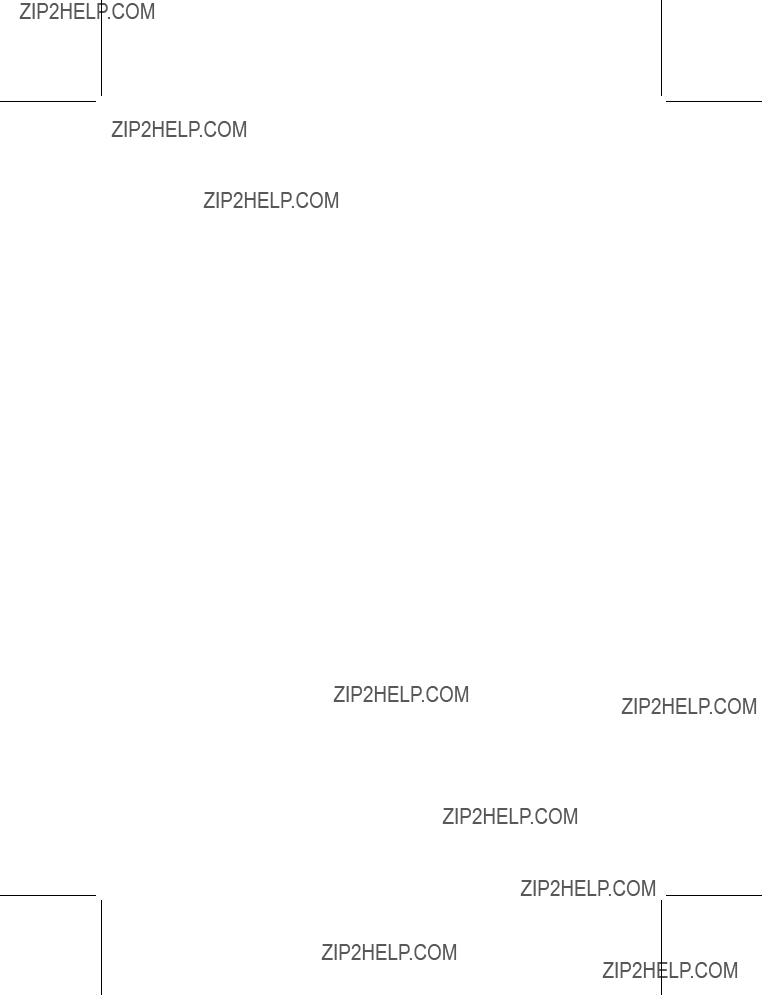
Network and Internet Problems
This section will help you solve common problems that might occur while you are using your local area network (LAN) or Internet connection.
I can???t stay connected to my wireless network.
If you are running the Microsoft Windows?? XP operating system with Service Pack 1 (SP1), you might lose connection to your wireless network every 3 to 5 minutes. This can be caused by incorrect wireless network security settings. To solve this problem, you need to disable 802.1x authentication on your wireless network, as described below.
To disable 802.1x authentication in Windows XP
1.Click Start, point to Connect To, click Show all connections, and then
2.On the General tab, click Properties.
3.Click the Wireless Networks tab.
4.Under Preferred Networks, click your home network, and then click Properties.
5.Click the Authentication tab, and then click to clear the Enable IEEE 802.1x authentication for this network check box, if it is selected.
6.If you cannot click this check box, then you are not using 802.1x authentication or wireless security.
I can???t access the Internet from a computer on my wireless network.
The following troubleshooting steps will help you track down and solve the problem.
OMake sure that the rest of your network is functioning correctly. Verify that you can access the Internet from other wireless and Ethernet computers on your network. If other computers also cannot access the Internet, the problem might be with your base station, modem, or ISP.
Another common cause of Internet connection problems is disconnected cabling. If the rest of your network is having problems, first check the cables between your computers and the base station or modem for loose connections or disconnected wires. Check the cables between the base station and the broadband modem. Verify that you are using the correct cables, that all cables are firmly attached, and that all status lights on the network devices indicate that your connections are functioning properly.
38 Microsoft Broadband Networking Wireless Base Station User???s Guide
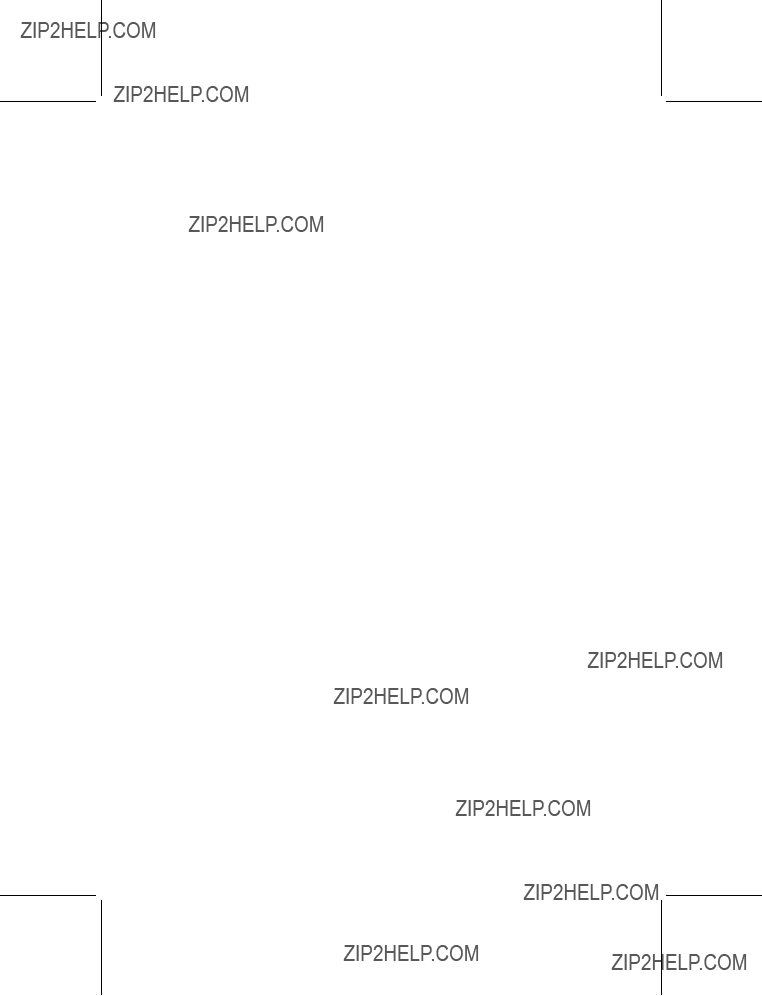
OCheck for range or interference issues. You might be out of range of the wireless base station or access point. Place the computer with the wireless adapter in the same room as your base station and try connecting again.
Interference can also cause Internet connection problems. Signals that are transmitted between the base station and a wireless adapter can be affected by interference from other wireless
For more information about range issues, see Chapter 1, ???Introduction.???
OVerify that you are using the correct wireless settings. You might have incomplete or incorrect wireless settings for your adapter. To connect successfully, the wireless adapter on your computer must have the same network name (SSID), wireless channel, and wireless security (such as Wireless Equivalent Privacy [WEP]) information as your base station. To check the wireless settings on your Microsoft base station, open the Base Station Management Tool from the Broadband Network Utility. You can also access the base station directly through your Internet browser by going to the address http://192.168.2.1. Then you can view and, if necessary, correct your Microsoft wireless adapter settings by opening Adapter Settings from the Tools menu of the Broadband Network Utility.
OReset your broadband modem. Turn off the modem for 5 to 10 seconds. Restart the modem, and wait for it to connect to your ISP. After the status lights on your modem indicate that it is connected, and the status lights on your base station show that you have a working Internet connection, try accessing the Internet from your computer again.
OReset your base station. Unplug the base station, wait at least 10 seconds, and plug it back in again. After the Power light turns green, try accessing the Internet again.
OUpdate your base station firmware. Firmware is the software that is loaded into your base station to provide network functions. You can update your base station firmware by downloading it from the Internet and installing it on your base station. If you are using a Microsoft base station, make sure that you are using the latest firmware version.
To update Microsoft base station firmware
1.
2.On the Help menu, click Check for Updates Online.
3.If there is a newer version of the firmware available, follow the instructions on the Web page to download the new software, firmware, or drivers.
Chapter 6: Troubleshooting 39

I can???t access the Internet from a computer connected to my network with an Ethernet cable.
If this is the first time you have used this adapter, you should follow the instructions in the User???s Guide to run the Setup Wizard. The wizard is designed to walk you through the installation and configuration of your Ethernet adapter.
The following troubleshooting steps will help you track down and solve the problem.
OMake sure that the rest of your network is functioning correctly. Verify that you can access the Internet from other computers on your network. If other computers also cannot access the Internet, the problem might be with your base station, modem, or ISP.
OMake sure that all cables are securely connected. Check that the cables in your network are securely connected to the correct ports.
Check all power cables and the cables between the broadband modem and the base station. Also check the Ethernet cable connecting the base station to the computer that is having connectivity problems.
In most cases, you will need a
OVerify that all status lights are illuminated. Make sure that the status lights on your network devices are illuminated to indicate that each Ethernet port is working properly.
If these lights are not illuminated, try a different type of Ethernet cable (straight- through or crossover) or a different network port, if possible. Check the setup instructions for your base station and your broadband modem to make sure that you do not need to use a different type of Ethernet cable
Check the base station to make sure that it is receiving power by inspecting the appropriate status lights. If the power light is flashing, you may need to reset the base station. To reset the Microsoft base station, unplug the power adapter from the base station and then plug it back in.
OCheck your Ethernet adapter network settings. If other computers on your network are working correctly, you might have incorrect network settings on the computer that is experiencing problems. Make sure that the Ethernet adapter for that computer has been correctly configured to work with your ISP???s connection settings. Compare the settings of a working computer on the existing network with those of the computer that is not connecting to the Internet. Verify that both adapters are using similar network settings in Network Properties.
40 Microsoft Broadband Networking Wireless Base Station User???s Guide

You can check your network settings by clicking the Network icon in Control Panel. Verify that you are using the same settings for Gateway Address, Subnet Mask, and DNS address. Verify that all computers connected with Ethernet cables are using different Internet protocol (IP) addresses.
For example, if your base station is configured to use a Dynamic IP (DHCP) connection, make sure that all computers on your network are set to ???Obtain an IP address Automatically??? under the TCP/IP settings in the Network section of Control Panel.
You can also check your network settings for each computer by using the Broadband Network Utility, if it is installed on this computer.
To check your Ethernet settings by using the Broadband Network Utility
1.
2.On the Tools menu, click Computer Settings.
3.Compare the computer settings with another computer on your network.
The IP address should be different on each computer, but other settings should be the same.
OReset your broadband modem. Turn off or unplug the modem for 5 to 10 seconds. Restart the modem, and wait for it to connect to your ISP. After the status lights on your modem indicate that it is functioning, and the status lights on your base station show that you have an Internet connection, try accessing the Internet from your computer again.
OReset your base station. Unplug the base station, wait at least 10 seconds, and turn it back on again. Let the base station reset itself. When the status lights show that the base station is functioning, try accessing the Internet from the computer again.
OUpdate your base station firmware. Firmware is the software that is loaded into your base station to provide network functions. You can update your base station firmware by downloading it from the Internet and installing it on your base station. If you are using a Microsoft base station, make sure that you are using the latest firmware version.
To update Microsoft base station firmware
1.
2.On the Help menu, click Check for Updates Online.
3.If there is a newer version of the firmware available, follow the instructions on the Web page to download the new software, firmware, or drivers.
Chapter 6: Troubleshooting 41

My network is slow.
If networked programs are running slowly, or you are experiencing large slowdowns in your Internet connection speed, try decreasing the number of computers or programs that are simultaneously accessing your network.
Note Programs that do not use network resources, for example Microsoft Word when it is editing a local document, will not interfere with the speed of your network. Only programs that must constantly use your network connection to function will be affected. Examples can include music sharing software and instant messenger programs.
Your network has a limited amount of bandwidth for transmitting data. As more computers access your network at the same time, the bandwidth must be divided among all computers. By reducing the number of programs accessing your network at the same time, you can increase the speed at which data is transmitted across your network.
You might find that you need more bandwidth to use all of your computers at the same time on the network. If your connection is still too slow, contact your Internet service provider (ISP) to verify that there are no problems with your connection, such as scheduled maintenance, line issues, or other problems. If you are still not satisfied with your connection speed, you might want to inquire about upgrading to a faster connection.
I am having problems running a networked program or multiplayer game on my network or the Internet.
Some networked applications might not be working as expected on your local area network (LAN). Symptoms of the problems vary and can include the following:
OProblems connecting to an application after the base station is installed.
ODisconnections while using an application.
OProblems sending or receiving audio and video.
OProblems connecting more than one computer to an online application simultaneously.
ODelays, or lag, while running a multiplayer game on several computers at once.
OGame crashes.
ODelays, or lag, while playing a game over the Internet.
42 Microsoft Broadband Networking Wireless Base Station User???s Guide

Several troubleshooting steps addressing these issues are listed below, with solutions to the most common problems listed first.
OMake sure that the rest of your network is functioning correctly. Verify that you can access the Internet from other computers on your network. If other computers also cannot access the Internet, the problem might be with your base station, modem, or Internet service provider (ISP). See the following troubleshooting steps for more information.
If this network does not have an Internet connection, verify that all computers are in the same workgroup and can see each other on the network. You can use the Broadband Network Utility to view all the computers in your workgroup and check your workgroup name. For more information about the Broadband Network Utility, see Chapter 4, ???Network Activities.???
If there are problems accessing the Internet or other computers on your network, check the cables between your computers and the base station or modem for loose or disconnected wires. Check the cables between the base station and the broadband modem. Verify that you are using the correct cables, that all cables are firmly attached, and that all status lights on the other network devices are functioning correctly.
If you are still having network problems, you should troubleshoot that issue before configuring a multiplayer network game.
OCheck your base station network settings. If other computers on your network are also having problems accessing the network and the Internet, you might have incorrect base station network settings. Verify that you are using the correct Internet settings required by your ISP, and that any wireless settings are correctly configured to allow all wireless computers to communicate.
If you are using a Microsoft base station, you can use the Broadband Network Utility and the Base Station Management Tool to check and manually configure your network settings. For more information, see Chapter 5, ???Network Management.??? If you are using a base station or router from another manufacturer, see the documentation for that device.
OCheck if your game or application has any special network requirements for multiplayer play. Some programs communicate between computers by using specific network ports. Most base stations include a firewall that prevents unauthorized communication on nearly all ports.
If your application or game requires special settings on your base station, such as forwarding a port for multiplayer play or setting up a virtual DMZ (demilitarized zone) to host a game server, you will be able to find this information in the program manual or on the software publisher???s Web site.
For a list of specific programs and the ports necessary to run them, see the Support section of the Broadband Networking Web site at www.microsoft.com/hardware.
Chapter 6: Troubleshooting 43

OIf you are using a wireless connection, check for range and interference issues.
You might be out of range of the wireless base station, gateway, or router. Position the computer with the wireless adapter in the same room as your base station and try connecting again. If you can connect to the wireless network and run applications and games without a problem, you might have been previously out
of range.
Another cause of problems is that signals transmitted between the base station and a wireless adapter can be affected by interference from other wireless devices??? including 2.4 GHz cordless phones, microwave ovens, and neighboring wireless networks. Move the other devices as needed, and refrain from using them while you are using the network. To minimize interference from another wireless network, try changing the wireless channel. For information about how to change your wireless settings, see Broadband Network Utility Help.
OCheck for duplicate NAT features, DHCP servers, or firewalls. Network Address Translation (NAT) and Dynamic Host Configuration Protocol (DHCP) are security features of the Microsoft base station and some other devices. If two devices, such as a base station and modem, are running NAT and/or DHCP servers at the same time, the devices can interfere with each other and cause intermittent failures. If you are running a Microsoft base station, for example, its firewall and NAT features could conflict with other network hardware and software. Verify that you have disabled NAT functionality and DHCP servers on other devices in your network. To determine if a device has one of these features, check the documentation for that device. Some other common network devices that could contain these features include routers, broadband modems, or wireless access points.
Software firewalls can also cause conflicts. Make sure that you turn off any personal firewall software, such as Internet Connection Firewall, when trying to run a game.
OUpdate your base station firmware. Firmware is the software that is loaded into your base station to provide network functions. You can update your base station firmware by downloading it from the Internet and installing it on your base station. If you are using a Microsoft base station, make sure that you are using the latest firmware version.
To update Microsoft base station firmware
1.
2.On the Help menu, click Check for Updates Online.
3.If there is a newer version of the firmware available, follow the instructions on the Web page to download the new software, firmware, or drivers.
44 Microsoft Broadband Networking Wireless Base Station User???s Guide

Printing and File Sharing Issues
This section will help you solve problems that you might encounter while printing over your network or accessing shared files and folders.
I can't print to a networked printer.
The following troubleshooting steps will help you track down and solve the problem.
OMake sure that the printer is functioning properly. There could be a problem with the printer itself. Verify that the printer is on and working correctly by using the printer???s
If the printer fails the self test, try turning the printer off and back on again. Make sure that the printer has ink and paper. If the printer is still not working, see the printer documentation.
OMake sure that you can print from your main computer. If the printer passes the self test, try printing from the computer that is connected directly to the printer. If this computer will not print successfully, you may need to install printer drivers or check the cable connecting the printer to your computer. See the following troubleshooting steps for more information.
OMake sure that all cables are securely connected. Check that the cables in your network are securely connected to the correct ports. Check all power cables and the cables between the printer and the host computer or network. Make sure that the status lights on the base station and each network adapter are illuminated to indicate that each connected Ethernet port is working properly. If the status lights are not illuminated, try a different type of Ethernet cable
OEnsure that the printer is shared over your network. If your printer is connected to a computer, which is then connected to your network, you must make that printer available to other computers. This process is known as ???sharing??? a printer over
the network.
To make a printer available to the network, go to the computer that is connected directly to the printer. Follow instructions for printer sharing for that computer???s operating system. For more information about sharing a printer over the network, see Windows Help.
OCheck whether the correct printer driver is installed. Every computer that will use a shared printer on your network must have that printer???s driver installed. You can make sure that the driver for the networked printer has been installed on a computer by checking the Printers item in Control Panel. If it is installed, you will see your shared printer listed in the Printers section. After you have verified that the printer driver is installed, try printing a test page from the computer.
You can install the printer driver by opening Printers and Faxes through Control Panel in Windows XP, or through the Add Printer feature in Control Panel on other Windows operating systems. If Windows prompts you for a driver disk, use the driver disk that came with your printer.
Chapter 6: Troubleshooting 45

I cannot access a shared file or folder from a computer on my network.
Files and folders are ???shared??? when they are made available to other users on your network from the computer on which they reside.
The following troubleshooting steps will help you track down and solve the problem.
OMake sure that your network is functioning correctly. By checking the status of your network, you can determine if the problem is due to a connectivity issue with your network or due to your shared file configuration. One easy way to check the status of your network is to use the Broadband Network Utility, which gives the status of your local and Internet network connections. Verify that all of the computers can access the Internet. If you are having problems accessing the Internet (possibly caused by loose or incorrect cables), fix those problems before proceeding with other troubleshooting methods listed here.
OTry accessing a different shared file or folder. If there are other shared resources on your network, try accessing those resources instead. If you can access other shared files but not the one you want, you might not have permission to access the file. For more information about permissions, see the troubleshooting topics below.
OEnsure that all computers are in the same workgroup. You will need to look at each computer to check its workgroup and, if necessary, change the workgroup name.
Note If one of your computers is a laptop that is used on a domain at work, you must leave the domain to join a workgroup at home and share files. To rejoin the domain at work, you will need administrative privileges on your computer.
If the computer is using a Microsoft Broadband Networking adapter, you can check which workgroup your computer belongs to on the main screen of the Broadband Networking Utility. Alternatively, you can check and modify the workgroup names on each computer by using the following instructions, specific to the Windows operating system:
Windows XP
1.Click Start, and then click Control Panel.
2.
Windows 2000
1.Click Start, point to Settings, and then click Control Panel.
2.
3.Click the Network Identification tab. If you need to modify the workgroup name, click Change.
46 Microsoft Broadband Networking Wireless Base Station User???s Guide

Windows 98, Windows 98 SE, and Windows Me
1.Click Start, point to Settings, and then click Control Panel.
2.
When all computers are members of the same workgroup, try sharing or accessing shared files again.
OTurn on file and printer sharing on the computer that contains the file that you want to share. The computer that you are trying to access must have file and printer sharing enabled for sharing to work correctly. When you run the Setup Wizard, you have the option of enabling file and printer sharing, but that option applies only to the computer running Setup. If a different computer contains the file that you want to share, you also must enable sharing on that second computer.
File and printer sharing is enabled differently on each operating version of Windows operating system. For more information about enabling file and printer sharing on your computer, see Chapter 4, ???Network Activities.???
OVerify that the file or folder???s permissions have been configured for access over the network. When files or folders are shared over the network, they still may not be accessible by everyone. Their owner may configure permissions that limit which users can read, write to, or delete the shared resources. If you are having difficulty accessing a file or folder on another computer, it may be because the permissions for that file limit your ability to see it over the network. You may receive an ???access denied??? error message, or have problems locating the shared files on your network.
To check the permissions for shared files or folders, go to the computer containing those files or folders. In Windows XP,
Note Microsoft Windows XP Home Edition uses only Simple File Sharing. Microsoft Windows XP Professional Edition uses both Simple File Sharing and standard,
To check permissions in Windows 2000, Windows 98, Windows 98 SE, and Windows Me operating systems,
For more information, search for ???file and folder permissions??? and ???simple file sharing??? in Windows Help.
Chapter 6: Troubleshooting 47

I can open shared files or folders, but cannot write to or delete them.
The following troubleshooting steps will help you track down and solve the problem.
OCheck to see if the file is
OCheck to see if you have permission to change the shared file or folder. When files or folders are shared over the network, they still might not be accessible by everyone. Their owner can configure permissions that limit which users can read, write to, or delete the shared resources. If you are having difficulty accessing a file or folder on another computer, it might be because the permissions for that file limit your ability to share it. You might receive an ???access denied??? error message, or have problems locating the shared files on your network.
For more information about checking and setting permissions, see Broadband Network Utility Help.
Note Windows XP Home Edition uses only Simple File Sharing. Windows XP Professional Edition uses both Simple File Sharing and standard,
I can only access shared resources from certain computers or user accounts on my network.
When you are able to access shared files from certain computers or user accounts on your network, but not others, it may be because the file???s owner has limited the access to certain users. To check the user permissions on a file, you must go to the computer on which the file is located.
To check user permissions on a computer running the Windows XP operating system
1.
2.Click the Security tab.
3.Users who have permissions for this shared resource are listed in the Group or user names list box. You can use the Add and Remove buttons to modify the list, and use the Permissions for section to change specific tasks available to each user.
4.Click OK to save the changes.
To check permissions in Windows 2000, Windows 98, Windows 98 SE, and Windows Me,
For more information, search for ???file and folder permissions??? in Windows Help.
48 Microsoft Broadband Networking Wireless Base Station User???s Guide


 appendixes
appendixes
Appendix A: Locating Your Internet and
Network Settings
If the Setup Wizard cannot detect your settings, or if you are setting up a product without using the Setup Wizard, you will need to enter your Internet and local area network (LAN) settings manually. The following instructions will help you locate the settings that you need. You can record this information on the inside back cover of this User???s Guide for future reference.
Internet Connection Type
You connect to your Internet service provider (ISP) by using one of three connection types:
ODynamic (by using Dynamic Host Configuration Protocol, or DHCP)
OStatic
O
Each type of Internet connection requires different settings when you set up a network device.
To determine which connection type your ISP provides
OSee the documentation provided by your Internet service provider or contact your ISP.
OIf you have a Microsoft?? base station set up on your network, you can use the Base Station Management Tool. Click Wide Area Network and view the settings under
Internet Connection Type.
OIf you have a broadband modem that came with a configuration utility, try using this utility.
OIf you have a

General Internet Settings
If you have not set up a base station, gateway, or router, and you have an adapter that is currently configured correctly for your ISP, you can use the following procedure to locate most of the Internet settings you need.
To locate your Internet settings
1.On the Start menu, click Run.
2.Do one of the following:
O If you have Microsoft Windows?? XP or Windows 2000, type cmd
O If you have Windows Me, Windows 98, or Windows 98 SE, type command
3.At the command prompt, type ipconfig /all
Dynamic IP (DHCP) Settings
When you set up a base station to have a dynamic IP address, the ISP will sometimes require a host name or a MAC address.
Host Name
Some ISPs record your computer name (also known as your host name) when you set up your ISP account. You might need to find your computer???s name when you set up a base station.
Note For information about changing your computer name, see Help in the Broadband Network Utility.
To determine your computer name in Microsoft Windows XP or Windows 2000 operating system
1.Click Start, click Control Panel, and then
2.Do one of the following:
O If you have Windows XP, click the Computer Name tab.
O If you have Windows 2000, click the Network Identification tab.
To determine your computer name in Windows Me, Windows 98, and Windows 98 SE
1.Click Start, point to Settings, and then click Control Panel.
2.
MAC Address
A media access control (MAC) address is a unique alphanumeric identifier that is printed or stamped on every networking device by the manufacturer. A MAC address looks something like the following: 0050F2731958. Some Internet service providers record the MAC address of the modem or adapter you???re using when you sign up for the service. To determine whether your Internet connection requires a MAC address, see the information provided by your ISP.
50 Microsoft Broadband Networking Wireless Base Station User???s Guide
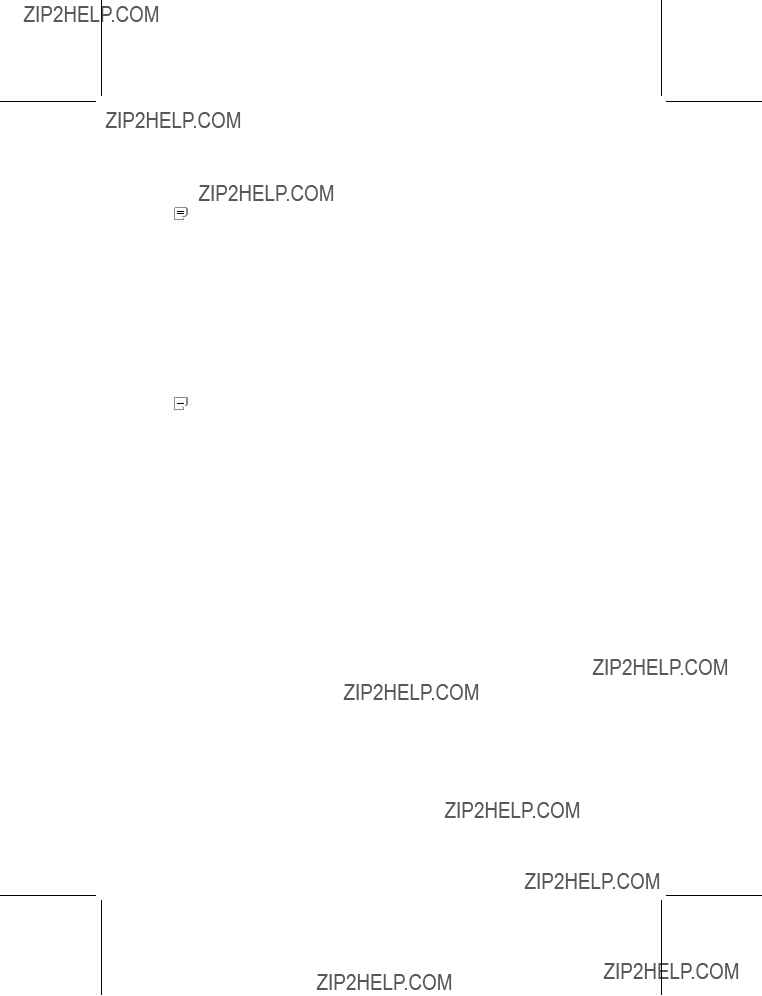
You can find the MAC address for your Microsoft adapters printed on the label. You can find the base station MAC address on the side of the base station (or on the underside if the base station is positioned vertically).
Note For information about cloning a MAC address, so that the setting conforms to the MAC address on record with your ISP, see Help in the Broadband Network Utility.
Static IP Settings
When you set up the base station to use a static IP address, you will need the IP address, subnet mask, and default gateway. You might also need primary and secondary Domain Name Server (DNS) settings.
Use any of the following methods to determine these settings:
OSee the documentation provided by your Internet service provider or contact your ISP.
OUse one of the following procedures, depending on your version of the Windows operating system.
Note For information about configuring a static IP address on an adapter, see Help in the Broadband Network Utility.
To locate your static IP address settings (Windows XP)
1.Do one of the following:
O Click Start, click Control Panel, click Network and Internet Connections, and then
O Click Start, click Control Panel, and then
2.In the Network Connections window,
click Properties.
3.Select Internet Protocol (TCP/IP), and then click Properties.
4.Under Use the following IP Address, note the settings for IP address, subnet mask, and default gateway name.
5.Note whether your connection obtains a DNS server address automatically, or whether it uses a specific address or addresses.
To locate your static IP address settings (Windows 2000)
1.Click Start, point to Settings, click Control Panel, and then
2.In the Network and
3.On the General tab, select Internet Protocol (TCP/IP), and then click Properties.
4.On the General tab, under Use the following IP address, note the IP addresses.
5.Click Advanced to see the gateway information.
6.On the DNS Configuration tab, note the DNS addresses.
Appendixes 51

To locate your static IP address settings (Windows Me, Windows 98, and Windows 98 SE)
1. Click Start, point to Settings, click Control Panel, and then
Note If you do not see the Network item in Control Panel, click View all control panel options on the left side of the screen.
2.On the Configuration tab, select TCP/IP, and then click Properties.
Note If there is more than one TCP/IP option listed, select the option for your Ethernet adapter, not your
3.On the IP Address tab, under Specify an IP Address, note the IP addresses.
4.On the Gateway tab, note the gateway information.
5.On the DNS Configuration tab, note the DNS addresses.
PPPoE Settings
To find your user name, password, and service name (if needed)
OSee the documentation provided by your Internet service provider or contact your ISP.
OIf your computer is running Windows XP,
OIf your computer is running Windows 2000, Windows Me, Windows 98, or Windows 98 SE, you installed access software when you set up the Internet connection. You can check this software for more information.
OIf you have an existing base station, gateway, or router and are replacing it with a Microsoft base station, you can use your existing network configuration utility.
OIf you are replacing an existing Microsoft base station, you can use the Base Station Management Tool. Click Wide Area Network.
Workgroup Name
If you want to add a computer to your workgroup, you need to know the workgroup name.
Note For information about changing your workgroup name, see Help in the Broadband Network Utility.
To determine your workgroup name in Windows XP or Windows 2000
1.Click Start, click Control Panel, and then
2.Do one of the following:
O If you have Windows XP, click the Computer Name tab.
O If you have Windows 2000, click the Network Identification tab.
52 Microsoft Broadband Networking Wireless Base Station User???s Guide

To determine your workgroup name in Windows Me and Windows 98
1.Click Start, point to Settings, and then click Control Panel.
2.
Wireless Network Name
Your wireless network name, or SSID, uniquely identifies your wireless network and is case sensitive.
OIf you have the Broadband Network Utility installed on a computer on your network, you can use it to identify your wireless network name.
OIf you have a Microsoft wireless base station, you can use the Base Station Management Tool. On the home page, click Wireless.
OIf you have a
Wireless Security Settings
Use these methods to locate your Wired Equivalent Privacy (WEP) key or
OIf you have a Microsoft wireless base station, you can use the Base Station Management Tool. On the Security menu, click Wireless Security.
OIf you have a
OIf you are connecting to a corporate network, ask your network administrator.
Appendixes 53

Appendix B:
Support and Technical Information
This appendix contains the following reference information for your Broadband Networking products:
OGetting Help
ORegulatory Information
OTechnical Specifications
OSystem Requirements
OLimited Warranty
Getting Help
If you have a question about your Microsoft?? Broadband Networking products, the following resources on the Web, in Help, and from Technical Support may help you find the answer.
Visit Us on the Web
Please visit the Microsoft Broadband Networking Web site at www.microsoft.com/ broadbandnetworking for the most
Click Help in the Broadband Network Utility
Go to the Help menu in the Microsoft Broadband Network Utility for extensive information about our products and for detailed troubleshooting information to help you identify and solve common networking problems.
Technical Support Options
Product Name: Microsoft Broadband Networking Wireless Base Station
54 Microsoft Broadband Networking Wireless Base Station User???s Guide

Regulatory Information
United States Radio and TV Interference Regulations
This device complies with Part 15 of the U.S. Federal Communications Commission (FCC) rules. Operation is subject to the following two conditions: (1) this device may not cause harmful interference, and (2) this device must accept any interference received, including interference that may cause undesired operation.
The Microsoft hardware device(s) that accompanies this software can radiate radio frequency (RF) energy. If not installed and used in strict accordance with the instructions given in this User???s Guide, the device may cause harmful interference with other
Your Microsoft hardware device has been tested, and it complies with the limits for a Class B digital device in accordance with the specifications in Part 15 of the FCC Rules. These limits are designed to provide reasonable protection against harmful RF interference in a residential installation.
To determine if your hardware device is causing interference to other
If this hardware device does cause interference, try the following measures to correct it:
ORelocate the antenna of the other
OMove the hardware device farther away from the radio or TV, or move it to one side or the other of the radio or TV.
OPlug the computer into a different power outlet so that the hardware device and radio or TV are on different circuits controlled by different circuit breakers or fuses.
OIf necessary, ask your computer dealer or an experienced
Note
Any changes or modifications not expressly approved by Microsoft could void the user???s authority to operate this device.
For use with UL Listed and GS approved personal computers. Not intended for use in machinery or industrial applications. Tested to comply with FCC Standards. For home and office use.
Model Numbers:
In addition, the following model numbers have been approved under FCC certification rather than under the FCC Declaration of Conformity Process:
Microsoft Corporation One Microsoft Way
Redmond, WA
Canadian Radiocommunication Regulations
This Class B digital apparatus complies with Canadian
The term ???IC:??? before the certification/registration number only signifies that the Industry Canada technical specifications were met.
Cet appareil num??rique de la classe B est conforme aux normes
L???expression ??IC:?? avant le num??ro d???homologation/enregistrement signifie seulement que les sp??cifications techniques d???Industrie Canada ont ??t?? respect??es.
Appendixes 55

Technical Specifications
Base Station
56 Microsoft Broadband Networking Wireless Base Station User???s Guide

System Requirements
To use the Microsoft Broadband Networking Wireless Base Station
OComputer to configure base station
OExternal broadband modem (DSL, cable, or other) with
OMicrosoft Internet Explorer version 5.0 or Netscape Navigator version 6.0, or later; to view and use base station HTML configuration screens
OAvailable AC power outlet
To use the Microsoft Broadband Networking Setup Wizard and Broadband Network Utility, you need:
OPC running Microsoft Windows 98??, Windows 98 SE, Windows Millennium Edition (Windows Me), Windows 2000* Professional, Windows XP Professional, or Windows XP Home Edition operating system
OMicrosoft Internet Explorer version 5.0 or later; setup will install Internet Explorer 6.0 browser components if needed, but will not displace your primary browser
O132 MB of available
for the first time; 40 MB of available
O4x
OVGA or higher resolution monitor; Super VGA recommended
Recommended:
OPersonal computer with Ethernet network adapter for easiest base station setup
OMicrosoft Mouse or compatible pointing device
O3.5"
Not all ISPs allow you to share a broadband connection. Please check with your ISP.
*Features and functionality are limited on Windows 2000.
Appendixes 57
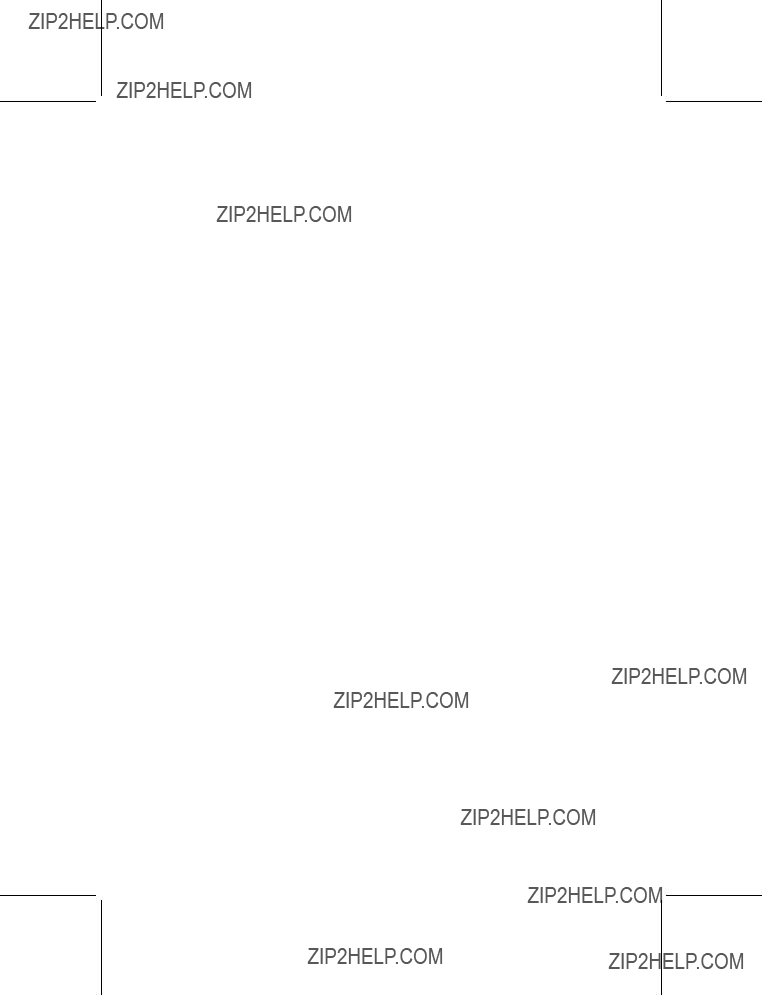
Your click of the ???accept??? button is a symbol of Your signature that You accept the terms of the EULA.
NOTE: The terms of this printed, paper EULA supersede the terms of any
SOFTWARE.
This EULA is a legal agreement between You (either an individual or a single legal entity who will be refered to in this EULA as ???You??? and ???Your???) and Microsoft Corporation and includes the Software Product License for the software portion of this Hardware Device, which includes the accompanying computer software, and may include associated media, printed materials and any ???online??? or electronic documentation (???SOFTWARE???). This EULA is valid and grants the
SOFTWARE PRODUCT LICENSE
The SOFTWARE is protected by copyright laws and international copyright treaties, as well as other intellectual property laws and treaties. The SOFTWARE is licensed, not sold.
1. GRANT OF LICENSE. This EULA grants You the following rights:
OSoftware Installation and Use. Except as otherwise expressly provided in this EULA, You may only install, use, access, run, or otherwise interact with (???Run???) one copy of the SOFTWARE on a single computer, such as a workstation, terminal, or other digital electronic device (???Workstation Computer???) to which the enclosed Hardware Device is attached. You may also Run a copy of the SOFTWARE on any computers or other electronic devices (each a "Computer" and collectively the ???Computers???) that are connected or networked to the Workstation Computer through the Hardware Device.
OReservation of Rights. Microsoft reserves all rights not expressly granted to You in this EULA.
2. DESCRIPTION OF OTHER RIGHTS AND LIMITATIONS.
OOperating System Upgrades. The SOFTWARE may contain systems components software upgrades required for proper operation of the SOFTWARE. Any such systems software upgrades are licensed to You pursuant to the terms and conditions as provided in Your license to the operating system unless a separate end user license agreement is provided to You with such upgrades, in which case such separate agreement governs Your use of the upgrades.
OMultiple Hardware Devices. If You purchased a multiple pack of the Hardware Device, You may make one (1) copy of the SOFTWARE for each Hardware Device You purchased in the package, and You may use each copy in the manner specified above.
OLimitations on Reverse Engineering, Decompilation and Disassembly. You may not reverse engineer, decompile, or disassemble the SOFTWARE, except and only to the extent that such activity is expressly permitted by applicable law notwithstanding this limitation.
OSeparation of Components. The SOFTWARE is licensed as a single product. Its component parts may not be separated for use on more than one computer.
ORental. You may not rent or lease or lend the SOFTWARE.
OSingle Computer. The SOFTWARE is licensed with the Hardware Device as a single integrated product. The SOFTWARE may only be used with the Hardware Device as set forth in this EULA.
OSoftware Transfer. You may permanently transfer all of Your rights under this EULA only as part of a transfer of the Hardware Device, provided You retain no copies, You transfer all of the SOFTWARE (including all component parts, the media and printed materials, any upgrades, this EULA and, if applicable, the Certificate of Authenticity) along with the accompanying Hardware Device, and the recipient agrees to the terms of this EULA. If the SOFTWARE portion is an upgrade, any transfer must include all prior versions of the SOFTWARE.
ONot For Resale Software. If the SOFTWARE is labeled ???Not for Resale??? or ???NFR???, then, notwithstanding other sections of this EULA, You may not resell, or otherwise transfer for value, the SOFTWARE.
OAuto Updates. You acknowledge and agree that Microsoft may automatically check the version of the SOFTWARE and/or its components You are utilizing and may provide upgrades and/or supplements to the SOFTWARE and/or its components that will be automatically downloaded to the Workstation Computer and all Computers. Your use of the SOFTWARE including such upgrade and/or supplement shall be governed by this EULA.
OTermination. Without prejudice to any other rights, Microsoft may terminate Your rights under this EULA if You fail to comply with the terms and conditions of this EULA. In such event, You must destroy all copies of the SOFTWARE and all of its component parts.
OTrademarks. This EULA does not grant You any rights in connection with any trademarks or service marks of Microsoft or its suppliers.
58 Microsoft Broadband Networking Wireless Base Station User???s Guide
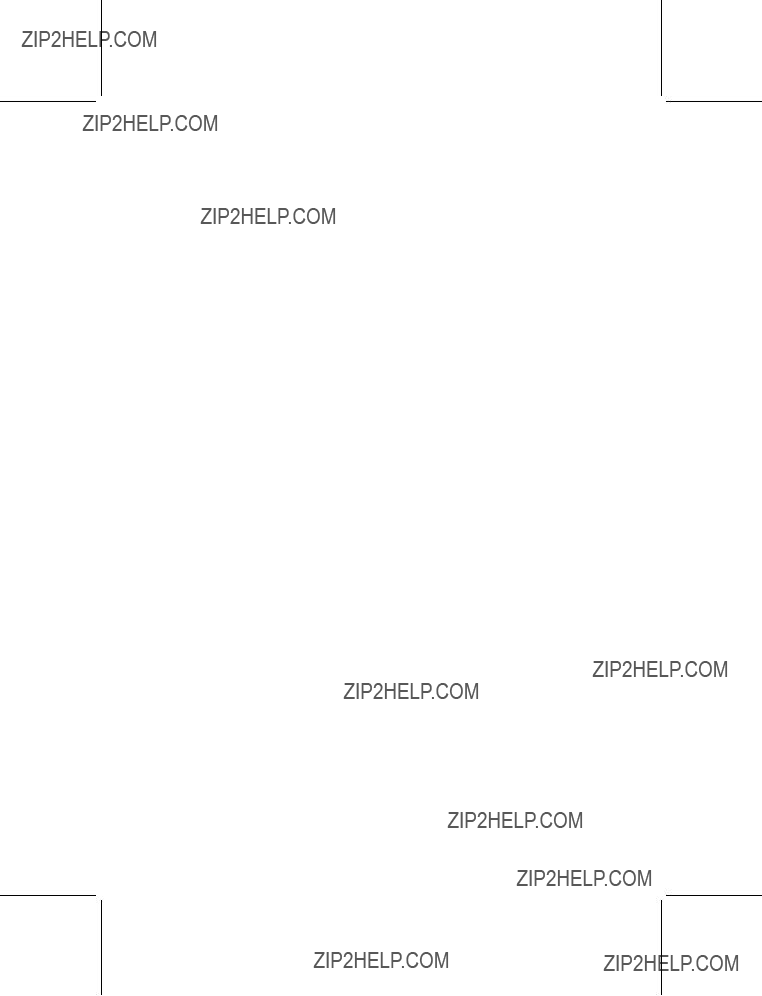
OSupport Services. Microsoft may provide You with support services related to the SOFTWARE and/or Hardware Device (???Support Services???). Use of Support Services is governed by the Microsoft policies and programs described in the user manual, in ???online??? documentation, and/or other
3.COPYRIGHT. All title and intellectual property rights in and to the SOFTWARE (including but not limited to any images, photographs, animations, video, audio, music, text and ???applets,??? incorporated into the SOFTWARE), the accompanying printed materials, and any copies of the SOFTWARE, are owned by Microsoft or its suppliers. All title and intellectual property rights in and to the content which is not contained in the SOFTWARE but may be accessed through use of the SOFTWARE is the product of the respective content owner and may be protected by applicable copyright or other intellectual property laws and treaties. This EULA grants You no rights to use such content. Use of any
4.EXPORT RESTRICTIONS. You acknowledge that the SOFTWARE licensed under this EULA is subject to U.S. export jurisdiction. You agree to comply with all applicable international and national laws that apply to the SOFTWARE, including the U.S. Export Administration Regulations, as well as
GENERAL PROVISIONS
These provisions 5, 6 and 7 apply to the Software Product License and the below Limited Warranty.
5. EXCLUSION OF INCIDENTAL, CONSEQUENTIAL AND CERTAIN OTHER DAMAGES and LIMITATION OF
LIABILITY. TO THE FULL EXTENT ALLOWED BY LAW, MICROSOFT IS NOT LIABLE FOR ANY: (i)CONSEQUENTIAL OR INCIDENTAL DAMAGES;
(ii)DAMAGES OR LOSS OF ANY NATURE WHATSOEVER RELATING TO LOST PROFITS, LOSS OF DATA OR PRIVACY
OR CONFIDENTIALITY, ANY INABILITY TO USE ALL OR PART OF THE HARDWARE DEVICE OR SOFTWARE,
PERSONAL INJURY, OR ANY FAILURE TO MEET ANY DUTY (INCLUDING BUT NOT LIMITED TO ANY LACK OF
NEGLIGENCE OR OF WORKMANLIKE EFFORT); OR (iii)INDIRECT, SPECIAL, OR PUNITIVE DAMAGES;
ARISING OUT OF OR RELATING IN ANY WAY TO THE SOFTWARE OR HARDWARE DEVICE. THE FOREGOING APPLIES
EVEN IF MICROSOFT OR ANY SUPPLIER OR AGENT HAS BEEN ADVISED OF THE POSSIBILITY OF SUCH LOSSES OR
DAMAGES; EVEN IN THE EVENT OF FAULT, TORT (INCLUDING NEGLIGENCE), STRICT OR PRODUCT LIABILITY, MISREPRESENTATION OR OTHER REASON; AND EVEN IF ANY REMEDY FAILS OF ITS ESSENTIAL PURPOSE. Some jurisdictions do not allow the exclusion or limitation of incidental or consequential damages, so the above limitation or exclusions may not apply to you.
6. GOVERNING LAW. If You acquired the Hardware Device in the United States of America, the laws of the State of Washington, U.S.A., apply to this agreement. If You acquired the Hardware Device in Canada, except where expressly prohibited by local laws, the laws in force in the Province of Ontario, Canada apply to this agreement and each of the parties hereto irrevocably attorns to the jurisdiction of the courts of the Province of Ontario and further agrees to commence any litigation which may arise hereunder in the courts located in the Judicial District of York, Province of Ontario.
If You acquired this Hardware Device outside of the countries listed above, then local laws may apply.
7. QUESTIONS. Should You have any questions concerning this agreement, or if You desire to contact Microsoft for any reason, please use the address information enclosed in the Hardware Device to contact the Microsoft subsidiary serving Your country, or visit Microsoft on the World Wide Web at http://www.microsoft.com.
Appendixes 59

LIMITED WARRANTY
A. WARRANTIES.
Express Warranty. Subject to the terms and conditions of this Limited Warranty, Microsoft warrants that under normal use and service on the day You receive and for the next 90 days for the SOFTWARE and the next two (2) years for the Hardware Device (the ???Warranty Period???), that the SOFTWARE and Hardware Device will substantially conform with the accompanying packaging and documentation.
Implied Warranty. You may also have an implied warranty and/or condition under the laws of some jurisdictions, which is hereby limited to the duration of the Warranty Period. Some jurisdictions do not allow limitations on how long an implied warranty or condition lasts, so the foregoing limitation may not apply to you.
As to any defects discovered after the Warranty Period, there is no warranty or condition of any kind.
B. EXCLUSIVE REMEDY. During the Warranty Period and subject to applicable law, and provided that You either return the SOFTWARE and Hardware Device to Your place of purchase or to Microsoft with a copy of Your receipt or other bona fide proof of purchase, Microsoft will, at its option and as your exclusive remedy for breach of this Limited Warranty or any implied warranties:
Orepair or replace the defective SOFTWARE or the Hardware Device or
Omake payment to You for the allowable damages that You incur in reasonable reliance but only up to the amount of the price You paid for the SOFTWARE and the Hardware Device (if any).
OAny replacement SOFTWARE or Hardware Device will be new or refurbished or serviceably used, comparable in function and performance to the original part or Hardware Device and warranted for the remainder of the original Warranty Period or 30 days from the date of shipment of the replacement back to You, whichever is longer.
OMicrosoft will use commercially reasonable efforts to diagnose and attempt to correct, or suggest solutions for, defects in the SOFTWARE and/or Hardware Device that are covered by this Limited Warranty. Microsoft does not provide any warranties regarding its warranty services and, except for the preceding sentence, disclaims all duties (if any) of workmanlike effort or of lack of negligence.
OExcept as otherwise required by legislation in Your jurisdiction, costs associated with transport (including packaging) for warranty service shall be at Your expense.
C.NO OTHER WARRANTIES. The express warranty stated in Section A above is the only express warranty made to You and is provided in lieu of all other express or implied warranties and conditions (if any) including any created by any other documentation or packaging. No other warranties or conditions are made with respect to the SOFTWARE or Hardware Device or the warranty services by any person, including but not limited to Microsoft and its suppliers. No information (oral or written) or suggestions given by Microsoft, its agents or suppliers or its or their employees, shall create a warranty or condition or expand the scope of this Limited Warranty. Also, there is no warranty or condition of title, quiet enjoyment, or noninfringement in the SOFTWARE and Hardware Device. You may have greater rights existing under legislation in your jurisdiction. Where any term of this Limited Warranty is prohibited by such laws, it shall be null and void, but the remainder of the Limited Warranty shall remain in full force and effect.
D.EXCLUSIONS. This Limited Warranty shall not apply and Microsoft has no liability under this Limited Warranty if the SOFTWARE or Hardware Device:
Ois used for commercial purposes (including rental or lease);
Ois modified or tampered with;
Ois damaged by Acts of God, power surge, misuse, abuse, negligence, accident, wear and tear, mishandling, misapplication, or other causes unrelated to defective materials or workmanship;
Ois damaged by programs, data, viruses, or files, or during shipments;
Ois not used in accordance with the accompanying documentation and use instructions; or
Ois repaired, modified or altered by other than Microsoft authorized repair centers.
E.REGISTRATION. You need not register Your acquisition of the SOFTWARE and Hardware Device for the Limited Warranty to be effective.
F.BENEFICIARY. To the extent allowed by applicable law, the Limited Warranty is only made to You, the first licensed user of the SOFTWARE and Hardware Device, and there are no third party beneficiaries of the Limited Warranty. It is not intended for and does not apply to anyone else (except as required by law), including anyone to whom You make any transfer as authorized in the EULA.
60 Microsoft Broadband Networking Wireless Base Station User???s Guide

CONTRAT DE LICENCE UTILISATEUR FINAL POUR LOGICIEL
MICROSOFT
IMPORTANT : ?? LIRE ATTENTIVEMENT : Veuillez lire attentivement et vous assurez de comprendre la totalit?? des droits et des restrictions qui sont d??crits dans le pr??sent contrat de licence utilisateur final (?? CLUF ??) de Microsoft, qui comprend la licence d???utilisation du logiciel, les dispositions g??n??rales, la garantie limit??e et la limite de responsabilit??. On vous demandera de prendre connaissance des modalit??s du CLUF et d???indiquer votre acceptation ou votre refus de ces modalit??s. Le LOGICIEL ne s???installera pas sur votre ordinateur tant que vous n???aurez pas accept?? les modalit??s du pr??sent CLUF. Si vous cliquez sur le bouton ?? j???accepte ?? vous serez r??put?? avoir appos?? votre signature et accept?? les modalit??s du CLUF.
NOTE : Les modalit??s de ce CLUF en format papier qui pourrait accompagner le LOGICIEL et l???appareil Microsoft qui l???accompagne remplacent les modalit??s d???un CLUF ?? l?????cran int??gr?? au LOGICIEL.
Le pr??sent CLUF constitue un contrat entre vous (un particulier ou une entit?? juridique d??sign?? dans le pr??sent CLUF par ?? vous ??, ?? votre ?? et ?? vos ??) et Microsoft Corporation et comprend la licence d???utilisation du logiciel pour la partie logiciel de l???appareil, ce qui comprend le logiciel qui l???accompagne, et pourrait comprendre des supports, des documents papier et des documents ?? en ligne ?? ou ??lectroniques connexes (le ?? LOGICIEL ??). Le pr??sent CLUF est valide et accorde ?? l???utilisateur final des droits SEULEMENT si le logiciel est un v??ritable LOGICIEL Microsoft. Si vous installez, copiez ou autrement utilisez le logiciel, vous acceptez d?????tre li?? par les modalit??s du pr??sent CLUF. Si vous n???acceptez pas les modalit??s du pr??sent CLUF, n???installez pas et n???utilisez pas le LOGICIEL. Dans ce dernier cas, vous devriez retourner le LOGICIEL et l???appareil Microsoft qui l???accompagne ?? Microsoft ou l???endroit o?? vous l???avez achet?? afin d???obtenir un remboursement.
LICENCE D???UTILISATION DU LOGICIEL
Le LOGICIEL est prot??g?? par les lois sur le droit d???auteur et les trait??s internationaux en mati??re de droit d???auteur, ainsi que par d???autres lois et trait??s en mati??re de propri??t?? intellectuelle. Le LOGICIEL ne fait pas l???objet d???une vente, mais plut??t d???une licence d???utilisation.
1. OCTROI DE LICENCE. Le pr??sent CLUF vous accorde les droits suivants :
OInstallation et utilisation du logiciel. ?? moins de stipulation contraire dans le pr??sent CLUF, vous ne pouvez installer, utiliser ou ex??cuter (?? ex??cuter ??) qu???un exemplaire du LOGICIEL sur un seul ordinateur, comme un poste de travail, un terminal ou un autre appareil num??rique (un ?? poste de travail ??) auquel l???appareil
OConservation de droits. Microsoft se r??serve tous les droits qui ne vous sont pas express??ment accord??s dans le pr??sent CLUF.
2. DESCRIPTION DES AUTRES DROITS ET LIMITES.
OMises ?? niveau du syst??me d???exploitation. Le LOGICIEL peut contenir des mises ?? niveau des composants syst??me requis pour l???ex??cution ad??quate du LOGICIEL. Les mises ?? niveau syst??me en question vous sont fournies sous licence aux termes des modalit??s figurant dans votre licence d???utilisation du syst??me d???exploitation, ?? moins qu???un contrat de licence utilisateur final distinct ne vous soit fourni avec les mises ?? niveau, auquel cas le contrat distinct en question r??git votre utilisation des mises ?? niveau.
OPlusieurs appareils. Si vous avez achet?? plusieurs appareils, vous pouvez faire une copie du LOGICIEL pour chaque appareil que vous avez achet?? et vous pouvez utiliser chaque copie de la fa??on d??crite
OLimites visant l???ing??nierie inverse, la d??compilation et le d??sassemblage. Vous n?????tes pas autoris?? ?? vous adonner ?? l???ing??nierie inverse, la d??compilation ou le d??sassemblage du LOGICIEL, sauf si une telle mesure est express??ment autoris??e par la loi applicable, sans ??gard ?? la pr??sente limite.
OS??paration des composants. Le LOGICIEL vis?? par la licence d???utilisation ne constitue qu???un seul produit. Ses composants ne peuvent pas ??tre utilis??s de fa??on distincte sur plus d???un ordinateur.
OLocation. Vous n?????tes pas autoris?? ?? louer ou pr??ter le LOGICIEL.
OOrdinateur unique. Le LOGICIEL et l???appareil qui l???accompagne font l???objet d???une licence d???utilisation ?? titre de produit unique int??gr??. Le LOGICIEL ne peut ??tre utilis?? qu???avec l???appareil de la fa??on d??crite dans le pr??sent CLUF.
OTransfert du logiciel. Vous ne pouvez transf??rer de fa??on permanente la totalit?? de vos droits aux termes du pr??sent CLUF que si vous transf??rez l???appareil et ne conservez aucune copie, vous transf??rez la totalit?? du LOGICIEL (y compris tous les composants, les supports et la documentation imprim??e, les mises ?? niveau, le pr??sent CLUF et, le cas ??ch??ant, le certificat d???authenticit??) et l???appareil qui l???accompagne, et que le destinataire accepte les modalit??s du pr??sent CLUF. Si la partie LOGICIEL constitue une mise ?? niveau, le transfert doit comprendre toutes les versions ant??rieures du LOGICIEL.
ORevente interdite du logiciel. Si le LOGICIEL porte la mention ?? revente interdite ?? vous ne pourrez alors pas, malgr?? les autres articles du pr??sent CLUF, revendre ou autrement transf??rer contre valeur le LOGICIEL.
OMises ?? jour automatiques. Vous reconnaissez que Microsoft peut v??rifier de fa??on automatique la version du LOGICIEL et/ou des composants que vous utilisez et peut fournir des mises ?? niveau et/ou des ajouts au LOGICIEL et/ou ?? ses composants qui seront t??l??charg??s automatiquement au poste de travail et ?? tous les ordinateurs. Votre utilisation du LOGICIEL, y compris les mises ?? niveau et/ou les ajouts, sera r??gie par le pr??sent CLUF.
Appendixes 61

OR??siliation. Sans porter pr??judice ?? d???autres droits, Microsoft peut r??voquer les droits que le pr??sent CLUF vous conf??re si vous omettez de vous conformer aux modalit??s du pr??sent CLUF. Dans ce cas, vous devrez d??truire toutes les copies du LOGICIEL et la totalit?? de ses composants.
OMarques de commerce. Le pr??sent CLUF ne vous conf??re aucun droit ?? l?????gard des marques de commerce ou des marques de service de Microsoft ou de ses fournisseurs.
OServices de soutien. Microsoft peut vous fournir des services de soutien li??s au LOGICIEL et/ou ?? l???appareil (les ?? services de soutien ??). L???utilisation des services de soutien est r??gie par les politiques et les programmes de Microsoft d??crits dans le guide de l???utilisateur, la documentation ?? en ligne ?? et/ou d???autres documents fournis par Microsoft. Les autres codes de logiciel qui vous sont fournis dans le cadre des services de soutien seront r??put??s faire partie du LOGICIEL et seront assujettis aux modalit??s du pr??sent CLUF. Microsoft peut utiliser les renseignements d???ordre technique que vous lui fournissez dans le cadre des services de soutien ?? des fins commerciales, dont le soutien et le d??veloppement de produits. Microsoft n???utilisera pas ces renseignements de fa??on ?? vous identifier.
ODROIT D???AUTEUR. Tous les titres de propri??t?? et les droits de propri??t?? intellectuelle visant le LOGICIEL (notamment les images, les photographies, les animations, les s??quences vid??os, les s??quences audio, la musique, le texte et les ?? applets ?? int??gr??s dans le LOGICIEL), les documents imprim??s qui l???accompagnent et toutes les copies du LOGICIEL appartiennent ?? Microsoft ou ?? ses fournisseurs. Tous les titres de propri??t?? et les droits de propri??t?? intellectuelle visant le contenu qui ne figure pas dans le LOGICIEL mais qui est accessible par l???utilisation du LOGICIEL appartiennent au propri??taire du contenu vis?? et pourraient ??tre prot??g??s par les lois et trait??s applicables en mati??re de droit d???auteur ou par d???autres lois et trait??s en mati??re de propri??t?? intellectuelle. Le pr??sent CLUF ne vous conf??re aucun droit d???utilisation de ce contenu. L???utilisation de services en ligne auxquels le LOGICIEL permet l???acc??s pourrait ??tre r??gi par les modalit??s d???utilisation respectives concernant ces services. Si le LOGICIEL renferme de la documentation qui n???est offerte que sous forme ??lectronique, vous pouvez en imprimer un exemplaire. Vous n?????tes pas autoris?? ?? copier les documents imprim??s qui accompagnent l???appareil et le LOGICIEL. Microsoft et ses fournisseurs se r??servent tous les droits qui ne sont pas express??ment conf??r??s par le pr??sent CLUF.
3. RESTRICTIONS VISANT L???EXPORTATION. Vous reconnaissez que le LOGICIEL faisant l???objet d???une licence d???utilisation aux termes du pr??sent CLUF est assujetti aux r??gles des
DISPOSITIONS G??N??RALES
Les articles 5, 6 et 7 s???appliquent ?? la licence d???utilisation du logiciel et ?? la garantie limit??e figurant
5. EXCLUSION DES DOMMAGES ACCESSOIRES, INDIRECTS ET DE CERTAINS AUTRES DOMMAGES et
LIMITATION DE RESPONSABILIT??. DANS LA MESURE MAXIMALE PERMISE PAR LA LOI, MICROSOFT N???EST EN
AUCUN CAS RESPONSABLE :
i)DES DOMMAGES ACCESSOIRES OU INDIRECTS;
ii)DES DOMMAGES OU PERTES DE QUELQUE NATURE QUE CE SOIT RELATIVEMENT AU MANQUE ?? GAGNER, ?? LA
PERTE DE DONN??ES OU ?? LA VIOLATION DE LA VIE PRIV??E OU DE LA CONFIDENTIALIT??, ?? TOUTE INCAPACIT??
D???UTILISER LA TOTALIT?? OU UNE PARTIE DE L???APPAREIL OU DU LOGICIEL, ?? TOUT PR??JUDICE PERSONNEL OU ??
TOUT D??FAUT DE S???ACQUITTER D???UN DEVOIR (NOTAMMENT L???ABSENCE DE N??GLIGENCE OU LE RESPECT DES R??GLES DE L???ART);
iii)DES DOMMAGES INDIRECTS, SP??CIAUX OU PUNITIFS; SE RAPPORTANT DE QUELQUE MANI??RE QUE CE SOIT
AU LOGICIEL OU ?? L???APPAREIL. LA DISPOSITION QUI PR??C??DE S???APPLIQUE M??ME SI MOCROSOFT OU TOUT
FOURNISSEUR OU AGENT A ??T?? INFORM?? DE LA POSSIBILIT?? DE CES PERTES OU DOMMAGES, M??ME EN CAS
DE FAUTE, DE D??LIT CIVIL (Y COMPRIS LA N??GLIGENCE), DE RESPONSABILIT?? STRICTE OU DE RESPONSABILIT??
CIVILE DE PRODUITS, DE D??CLARATION FAUSSE OU TROMPEUSE OU D???AUTRES RAISONS, ET M??ME SI TOUT RECOURS N???ATTEINT PAS SON BUT ESSENTIEL. Certains territoires ne permettent pas d???exclure ou de limiter les dommages indirects ou accessoires, de sorte que les limites ou exclusions
6.LOI APPLICABLE. Si vous avez acquis l???appareil aux
7.QUESTIONS. Pour de plus amples renseignements sur le pr??sent contrat ou si vous souhaitez communiquer avec Microsoft pour quelque raison que ce soit, veuillez utiliser l???adresse figurant dans les documents qui accompagnent l???appareil pour communiquer avec la filiale de Microsoft qui dessert votre pays ou consulter le site Web de Microsoft ?? l???adresse http://www.microsoft.com.
62 Microsoft Broadband Networking Wireless Base Station User???s Guide

GARANTIE LIMIT??E
A. GARANTIES.
Garantie expresse. Sous r??serve des modalit??s de la pr??sente garantie limit??e, Microsoft garantit que dans des conditions normales d???utilisation et d???entretien pendant 90 jours ?? compter du jour o?? vous recevez le LOGICIEL et pendant deux (2) ans ?? compter du jour o?? vous recevez l???appareil (la ?? p??riode de garantie ??), le LOGICIEL et l???appareil r??pondront essentiellement aux caract??ristiques qui figurent sur l???emballage et dans la documentation qui les accompagnent.
Garantie implicite. Vous pourriez ??galement b??n??ficier d???une garantie et/ou d???une condition implicite en vertu des lois de certains territoires, dont la dur??e est par la pr??sente limit??e ?? la p??riode de garantie. Certains territoires n???autorisent pas la limitation de la dur??e d???une garantie ou condition implicite, de sorte que la limite
En ce qui concerne les vices d??couverts apr??s la p??riode de garantie, aucune garantie ou condition de quelque nature que ce soit n???est offerte.
B. RECOURS EXCLUSIF. Au cours de la p??riode de garantie et sous r??serve des lois applicables, et pourvu que vous retourniez le LOGICIEL et l???appareil ?? l???endroit o?? vous les avez achet??s ou ?? Microsoft accompagn??s d???une copie de votre re??u ou d???une autre preuve d???achat, Microsoft prendra, ?? son gr??, l???une des mesures suivantes qui constituera votre recours exclusif en cas de violation de la pr??sente garantie limit??e ou de toute garantie implicite :
Oelle r??parera ou remplacera un LOGICIEL ou un appareil d??fectueux;
Oelle vous versera une somme se limitant aux dommages admissibles raisonnables que vous avez subis, mais uniquement jusqu????? concurrence du prix que vous avez pay?? pour le LOGICIEL et l???appareil (le cas ??ch??ant);
Ole LOGICIEL ou l???appareil de rechange sera neuf ou remis ?? neuf ou d???occasion mais en ??tat de fonctionner, offrant des fonctions et des performances comparables ?? la pi??ce ou ?? l???appareil d???origine et sera garanti pour le reste de la p??riode de garantie initiale ou pendant 30 jours apr??s la date d???exp??dition de la pi??ce ou de l???appareil de rechange qui vous a ??t?? retourn??, selon le plus long de ces deux d??lais;
OMicrosoft d??ploiera des efforts raisonnables, sur le plan commercial, pour diagnostiquer et tenter de corriger les vices du LOGICIEL et/ou de l???appareil qui sont vis??s par la pr??sente garantie limit??e ou sugg??rer des solutions ?? leur ??gard. Microsoft n???offre aucune garantie relativement ?? ses services fournis aux termes de la garantie et, exception faite de la phrase qui pr??c??de, rejette toute obligation (le cas ??ch??ant) relativement au respect des r??gles de l???art ou ?? l???absence de n??gligence;
Oexception faite de ce qui est autrement pr??vu par les lois de votre territoire, vous devrez assumer les co??ts associ??s au transport (y compris l???emballage) pour les services fournis aux termes de la garantie.
C.AUCUNE AUTRE GARANTIE. La garantie expresse ??nonc??e ?? la section A
D.EXCLUSIONS. La pr??sente garantie limit??e ne s???appliquera pas et Microsoft n???aura aucune responsabilit?? aux termes de la pr??sente garantie limit??e si le LOGICIEL ou l???appareil :
Oest utilis?? ?? des fins commerciales (y compris la locataion);
Oest modifi?? ou alt??r??;
Oest endommag?? par suite d???un cas de force majeure, d???une surtension, d???une mauvaise utilisation, d???une n??gligence, d???un accident, d???une usure, d???une manipulation inad??quate ou d???une autre cause qui n???est pas li??e ?? un vice de mat??riel ou de fabrication;
Oest endommag?? par des programmes, des donn??es, des virus, des fichiers ou pendant l???exp??dition;
On???est pas utilis?? conform??ment ?? la documentation et aux directives d???utilisation qui l???accompagnent;
Oest r??par??, modifi?? ou alt??r?? ailleurs que dans un centre de r??paration autoris?? par Microsoft.
E.ENREGISTREMENT. Vous n?????tes pas tenu d???enregistrer votre acquisition du LOGICIEL et de l???appareil pour que la garantie limit??e entre en vigueur.
F.B??N??FICIAIRE. Dans la mesure permise par la loi applicable, la garantie limit??e n???est offerte qu????? vous, le premier utilisateur titulaire d???une licence d???utilisation du LOGICIEL et de l???appareil, et il n???existe aucun autre b??n??ficiaire de la garantie limit??e. Elle ne vise personne d???autre et elle ne s???applique en faveur de personne d???autre (sauf stipulation contraire d???une loi), y compris toute personne ?? qui vous effectuez un transfert autoris?? par le CLUF.
Appendixes 63



 glossary
glossary
This glossary contains common terms for wired and wireless networking. There is a more complete list of terms in Broadband Network Utility Help.
802.11b A wireless networking standard that transmits wireless data at speeds up to 11 megabits per second (Mbps).
802.11g A wireless networking standard that transmits wireless data at speeds up to 54 megabits per second (Mbps).
access point See ???wireless access point.???
ad hoc network A wireless network in which computers connect to each other directly. Contrast with ???infrastructure network.???
adapter See ???network adapter.???
bandwidth The rate at which data can be transmitted through a network connection.
base station A device (also known as a gateway or router) that acts as a central point for networked devices, receiving and forwarding data between them. A base station typically is a point of connection that sends data between several networks. It often can be programmed with rules about what data is acceptable to send and receive.
bridge A networking device that exchanges data from one segment of a network to another. See ???wireless access point.???
broadband A
digital cable lines or digital telephone lines (DSL).
CardBus A credit
channel In reference to a ???wireless channel,??? a channel is a path or link through which information passes between two wireless devices. In radio transmission, these different channels are of different radio frequencies.
client A computer or software program that relies on another computer or program to act as a server. See ???server.???
client/server A network of two or more computers that rely on a central server to network mediate the connections or provide additional system resources.
Contrast with
computer name A name that uniquely identifies a computer on a network. One computer name cannot be the same as any other computer name or domain name on the network.

network.???
crossover cable See ???Ethernet cable.???
DHCP Acronym for ???Dynamic Host Configuration Protocol.??? DHCP is an Internet protocol that automatically assigns temporary Internet Protocol (IP) addresses to computers.
DMZ See ???virtual DMZ.???
DNS Acronym for ???Domain Name System.??? A data query service used on the Internet for translating host names, such as www.microsoft.com, into Internet addresses that can be understood by computers.
domain A collection of computers on a network that share a common user database and security policy. A domain is administered as a unit with common rules and procedures by the domain administrator. Each domain has a unique name.
DSL Acronym for ???Digital Subscriber Line.??? A constant,
dynamic IP address A dynamic Internet Protocol (IP) address is a unique identifier that is assigned temporarily (by using the Dynamic Host Configuration Protocol, or DHCP) to a device that requires it. IP addresses are required for computers to find one another and communicate over the Internet. Contrast with ???static IP address.???
Ethernet A networking standard that uses cables to transmit data between computers. Also known as the IEEE 802.3 standard.
Ethernet cable A type of cable that transmits data between computers. A widely used network technology. There are two types of Ethernet cables,
file sharing See ???sharing.???
firewall A security system that helps protect a network from hacker attacks and other threats that originate outside the network. A hardware firewall is a device at the entrance to a network that has specific
firmware Software information loaded in permanent memory on a device.
gateway See ???base station.???
host name The Domain Name System (DNS) name of a device on a network, a name such as www.microsoft.com.
66 Microsoft Broadband Networking Wireless Base Station User???s Guide

hub A device that has multiple ports and that serves as a connection point for Ethernet cables on a network. When data arrives at the hub from one computer, it is copied to the other ports to be transmitted to other computers. Unlike the more ???intelligent??? switch and router, the hub does not direct or control data flow.
infrastructure A wireless network in which devices connect to each other through network an access point, or use a more sophisticated intermediary such as a
base station (gateway or router). Contrast with ???ad hoc network.???
intranet A network within an organization, also called a private network, that is available only to certain people, such as employees of a company. Some intranets offer access to the Internet.
IP Acronym for ???Internet Protocol.??? The set of rules that describe how to send data between computers over the Internet. More specifically, this protocol governs the routing of data messages, which are transmitted in smaller components called packets.
IP address Acronym for ???Internet Protocol??? address. An IP address is an assigned number used to identify a computer that is connected to a network or the Internet through the Transmission Control Protocol/Internet Protocol (TCP/IP). An IP address consists of four numbers (each of which can be no greater than 255) separated by periods, such as 172.31.1.1.
ISP Acronym for ???Internet service provider.??? A company that provides access to the Internet.
Kbps Abbreviation of ???kilobits per second.??? A measure of data transfer speed through a modem or on a network.
LAN Acronym for ???local area network.??? A group of computers and other devices dispersed over a relatively limited area (for example, a building) and connected by a communications link that enables any device to interact with any other on the network.
MAC address Acronym for ???media access control??? address. Each network adapter and other network hardware device is manufactured with its own unique MAC address. Networking standards and technologies use MAC addresses to pass information between network devices.
Mbps Abbreviation of ???megabits per second.??? A measure of data transfer speed. Do not confuse with megabytes per second, or MBps.
NAT Acronym for ???network address translation.??? NAT is a base station feature and software feature that allows all of the computers on a network to access the Internet through one Internet Protocol (IP) address, and helps ensure the computers??? security by hiding their individual IP addresses.
network A group of computers and associated devices that are connected by communications paths. Networks can interconnect with other networks and contain
Glossary 67

network adapter A computer circuit board, card, or other device used to provide network access from a computer to other parts of the network ??? for example, to another computer, a printer, or a base station (gateway or router). Adapters can be installed inside a computer, inserted into a computer???s expansion slots, or connected to a computer???s ports.
NIC Acronym for ???Network Interface Card.??? A circuit board, expansion card, or other device used to provide network access to a computer or other network component, such as a printer. Network interface cards do the actual sending and receiving of data.
packet A unit of information transmitted as a whole from one device to another on a network. This is often a piece of a file that has been divided up for efficient transmission over the Internet.
PC Card A credit
PCI Acronym for ???Peripheral Component Interconnect.??? A specific local bus type that allows up to 10
PCMCIA Acronym for ???Personal Computer Memory Card International Association.??? This group defined the standards for the PC Card, a type of expansion card designed for notebook computers.
Plug and Play Sometimes abbreviated ???PnP.??? A set of specifications that allow a computer to automatically detect and configure various peripheral devices, such as monitors, modems, and printers. See ???UPnP.???
port This term has several meanings: (1) A physical connection through which data is transferred between a computer and another computer, a network, and other devices (such as a monitor, modem, or printer). (2) A software channel for network communications. When a client computer communicates through a network with a server, it sends its request over a certain numbered channel, called a ???port.???
port forwarding When a base station, gateway, or router passes information between your network and the Internet, it filters the information based on which software (virtual) ports are being used and how those ports are configured. For example, Internet (HTTP) communication, by default, travels over port 80. To help ensure security, all other ports are blocked from transferring data unless you specifically configure those ports to ???forward??? incoming data to other locations.
PPPAcronym for
68 Microsoft Broadband Networking Wireless Base Station User???s Guide

PPPoE Acronym for
protocol A set of rules and conventions for sending information over a network. These rules govern the content, format, timing, sequencing, and error control of messages exchanged among network devices. For example, your computer connects to the Internet using the Transmission Control Protocol/Internet Protocol (TCP/IP).
resource In reference to a ???network resource,??? a resource is any type of hardware (such as a modem or printer) or software (such as an application, file, or game) that users can share on a network.
router See ???base station.???
server A computer or software program that mediates the connections between client computers or programs on a network. The server also responds to requests and provides shared resources, such as storage space or processing power, to clients on the network.
sharing To make the files, folders, or printers that are on one computer (or connected to one computer) available to other computers on a network.
SSID Acronym for ???Service Set Identifier,??? also known as a ???wireless network name.??? An SSID value uniquely identifies your wireless network and is case sensitive.
static IP address A static Internet Protocol (IP) address is a unique identifier that is assigned permanently to a computer by a network administrator or an Internet service provider (ISP). IP addresses are required in order for computers to find one another and communicate over the Internet. Contrast with ???dynamic IP address.???
subnet A distinct network that forms part of a larger computer network. Subnets are connected through routers and can use a shared network address to connect to the Internet.
subnet mask Similar in form to an Internet Protocol (IP) address, a subnet mask is provided by your Internet service provider (ISP) and used to configure a networked computer for proper communication with a network. An example of a subnet mask value is 255.255.0.0.
switch Like a hub, a switch is a device that has multiple ports and that serves as a connection point for Ethernet cables on a network. But a switch only forwards data packets to the computer that has requested them. A router is a specialized kind of switch.
TCP/IP Acronym for ???Transmission Control Protocol/Internet Protocol.??? A networking protocol that allows computers to communicate across interconnected networks and the Internet. Every computer on the Internet communicates by using TCP/IP.
Glossary 69

UPnP UPnP??? standards are defined by the Universal Plug and Play Forum. They extend conventional Plug and Play (PnP) standards. When a UPnP device is plugged into a network, the other devices on the network automatically detect the new device.
USB Acronym for ???universal serial bus.??? A hardware standard for easily connecting peripherals to a computer system. USB supports Plug and Play and UPnP installation, so devices can be connected and disconnected without shutting down and restarting your computer.
USB port A rectangular slot in a computer or computer peripheral into which a USB connector is inserted. USB ports can be
virtual DMZ The Microsoft base stations support a variation of DMZ hosting capabilities, called a ???virtual DMZ.??? DMZ is an acronym for ???demilitarized zone,??? which refers to an area of your network that is outside of the firewall, and so is exposed to direct access from the Internet.
VPN Acronym for ???virtual private network.??? A set of computers on a public network, such as the Internet, that communicate among themselves by using encryption technology.
WAN Acronym for ???wide area network.??? A geographically widespread network that might include many linked local area networks (LANs).
WEP Acronym for ???Wired Equivalent Privacy.??? An encryption mechanism that helps protect data transmitted over wireless networks. If you are operating a wireless network, it is strongly recommended that you enable WEP. See ???WPA.???
wireless access A device that exchanges data wirelessly as an intermediary between point computers on a network, especially between wireless and wired
components of a network. An access point is not as sophisticated a device as a base station (gateway or router). See ???base station.???
WLAN Acronym for ???wireless local area network.??? A network that exclusively relies on wireless technology for device connections.
workgroup A group of computers connected to each other over a network and sharing computer files, printers, and other resources. All computers on a network that wish to share resources must be members of the same workgroup.
WPA Acronym for
70 Microsoft Broadband Networking Wireless Base Station User???s Guide


 index
index
802.11 protocol, 5, 6
802.1x authentication, 38 access point setup, 14 administrative privileges, 10 antenna, adjusting, 6 antivirus software, 30 applications, sharing, 24 base station
antenna, adjusting, 6 connecting to computer, 12 Ethernet connections, 7 features, 1
indicator lights, 2, 3 password, 16 ports, 2 positioning, 4, 5 resetting, 4
restoring factory default settings, 4 security, 31
settings, 13 Setup Wizard, 10 specifications, 56 stand, setting up, 4
system requirements, 57 troubleshooting setup, 34 Typical Setup, 9
UPnP Standards, 2
wireless access point setup, 14 Base Station Management Tool
about, 15
connection status, 20 Internet settings, 17 network settings, 19 opening, 16
password, changing, 16 setting up, 16
TCP/IP properties, configuring, 19 wireless settings, 18
box, contents, 1
broadband modems, troubleshooting, 35 Broadband Network Utility
devices, viewing connected, 23, 29 opening, 23
status, connection, 29 system requirements, 57
upgrading software or firmware, 30 browsers supported, 57
cables, Ethernet connecting, 12 troubleshooting, 40 types of, 7
wireless setup, 14
connecting base station, 12 TCP/IP properties, 19
connecting base station to computer, 12 connection status, 20, 29
connectors, Ethernet cables, 7 copying files and folders, 26 crossover Ethernet cables, 7 customer support, 54
data rate specifications, 56 default settings, restoring, 4 devices, viewing connected, 23, 29 drivers, upgrading, 30
drives, sharing, 27 dynamic IP addresses, 50
connecting, 12 troubleshooting, 40 types of, 7
wireless setup, 14
Ethernet status light, base station, 3

Explorer, versions supported, 57 factory default settings, restoring, 4 FCC regulations, 55
files
copying, 26 sharing, 24
troubleshooting sharing, 46, 48 firewalls
about, 31 disabling, 10
firmware troubleshooting, 37 upgrading, 30
folders copying, 26 sharing, 24
troubleshooting sharing, 46, 48 games, multiplayer
setting up, 28 troubleshooting, 42
hackers, preventing, 31 hard drives, sharing, 27 help, 54
host Name, 50 indicator lights, 2, 3 installation
base station, 10
Base Station Management Tool, 15, 16 preparing for, 10
software, 11
system requirements, 57 troubleshooting, 33, 34 wireless access point setup, 14
interference
Ethernet transmissions, 7 wireless transmission, 6
Internet connections
Base Station Management Tool settings, 17
settings, 50 sharing, 22
speed, troubleshooting, 42 status, viewing, 20, 29 troubleshooting, 35, 36, 38 types of, 49
Internet Explorer, versions supported, 57 IP addresses
dynamic, 50 hiding, 31 static, 51
jacks, base station, 2 kit, contents, 1 lights, 2, 3
local printer, defined, 26 logging on
administrative privileges, 10 network, 22
MAC addresses locating, 50 troubleshooting, 36
Modem light, base station, 3 modems, troubleshooting, 35 modulation specifications, 56 multiplayer games
setting up, 28 troubleshooting, 42
NAT (network address translation), 31
Netscape Navigator, versions supported, 57
network address translation (NAT), 31 networks
devices, viewing connected, 23, 29 printers, 26
security, 31
speed, troubleshooting, 42 status, viewing, 29
testing connections, 13 wireless settings, 18
online help, 54 password, 16
peripheral devices, sharing, 27 permissions, files and folders, 25 phone numbers, support, 54
Plug and Play (UPnP) standards, 2 ports
locations, 2 specifications, 56
positioning base station, 4, 5 Power light, 3
PPPoE Internet connection, 52
72 Microsoft Broadband Networking Wireless Base Station User???s Guide


Typical Setup base station, 9
preparing for, 10
unauthorized access, preventing, 31 Universal Plug and Play standards, 2 upgrading firmware, 30, 37
UPnP standards, 2 viruses, preventing, 30 Web sites, support, 54 weight specifications, 56
WEP (Wired Equivalent Privacy) about, 31
settings, 53
Windows XP issues, 38
Wired Equivalent Privacy (WEP) about, 31
settings, 53
wireless access point, setting up, 14 wireless network name (SSID), 53 wireless network settings, 18 Wireless status light, 3
wireless transmission speed, 5, 6 workgroup names, 52
WPA
Zip drives, sharing, 27
74 Microsoft Broadband Networking Wireless Base Station User???s Guide

My Network Settings
Use this page to record your network settings.
Workgroup or domain name: ______________________________________
Base Station password: __________________________________________
(Default=admin)
Wireless Settings
Record the information used to configure a computer for wireless access to your network here. All computers accessing your network with a wireless connection need to use the same wireless settings.
Wireless network name (SSID): ____________________________________
WEP key or WPA passphrase: ______________________________________
Wireless channel
Wide Area Network Settings
Complete this section only if your network has a base station (gateway or router). You can obtain this information from your Internet service provider (ISP). Your ISP may not require all of the settings listed below.
Dynamic IP (DHCP) Settings
Complete this section only if your ISP uses a DHCP connection.
Host name: _____________________________________________________
Adapter MAC address: ____________________________________________
Static IP Address Settings
Complete this section only if your ISP has assigned you a specific IP address. Static IP address: ________________________________________________
Subnet mask: ___________________________________________________
IP gateway address: ______________________________________________
Primary DNS server: ______________________________________________
Secondary DNS server: ___________________________________________
PPPoE Settings
Complete this section only if your ISP uses PPPoE.
User name: _____________________________________________________
Password: ______________________________________________________
Service name: ___________________________________________________

m
www.microsoft.com/broadbandnetworking
0703 Part No.